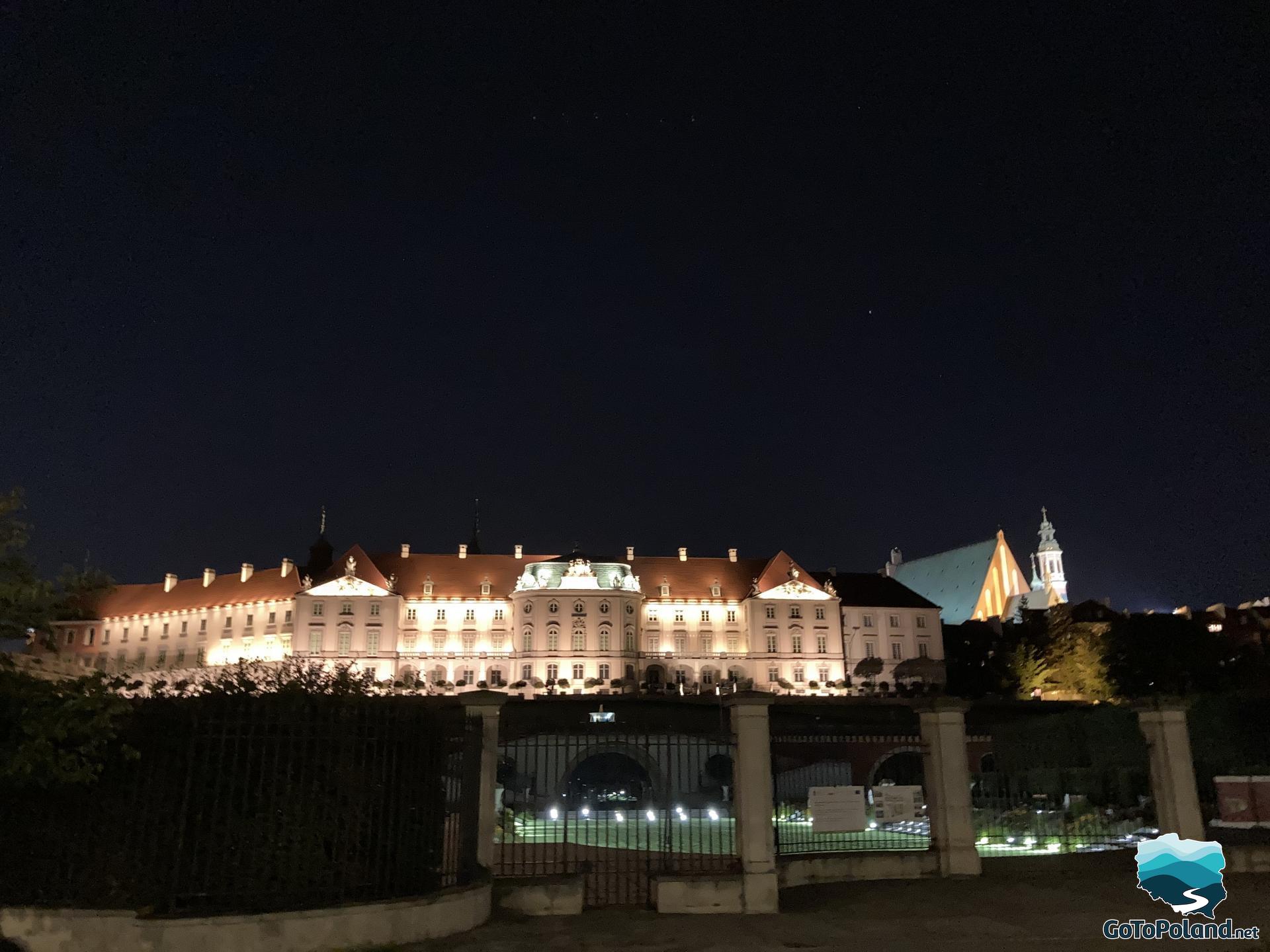
Sightseeing and attractions in Warsaw. Visit the Royal Castle with me!
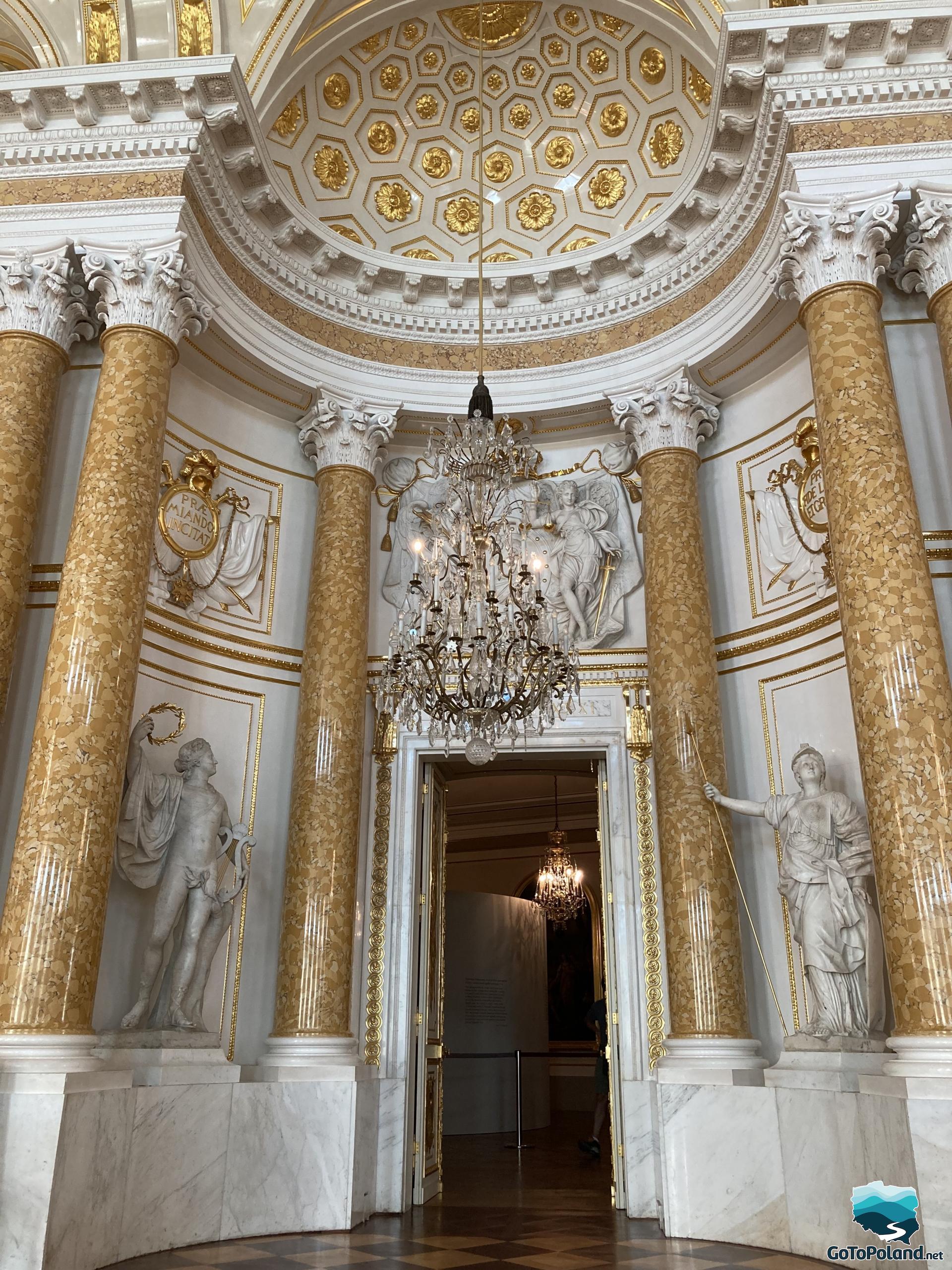
The Royal Castle in Warsaw has a long and difficult history behind itself. Partly because of this history, it deserves special respect and closer look at its fate. The castle was built in the Baroque-Classicist style and currently serves as one of the most important representative buildings in our country. Although it looks very economical from the outside, inside the interiors are stunning, bursting with splendour. The castle rooms have been restored with great care and precision.

At the beginning, the castle was the residence of the Mazovian dukes, and from the 16th century it became the seat of the king and the Sejm - the authorities of the First Republic of Poland. In its long history, the Royal Castle was plundered and devastated many times by the Swedish, Brandenburg, German and Russian armies. In the 19th century, after the fall of the November Uprising, it was intended for the needs of the Russian administration. In the years 1920-1922 it was the seat of the Chief of State, in the years 1926-1939 it became the residence of the President of Poland.
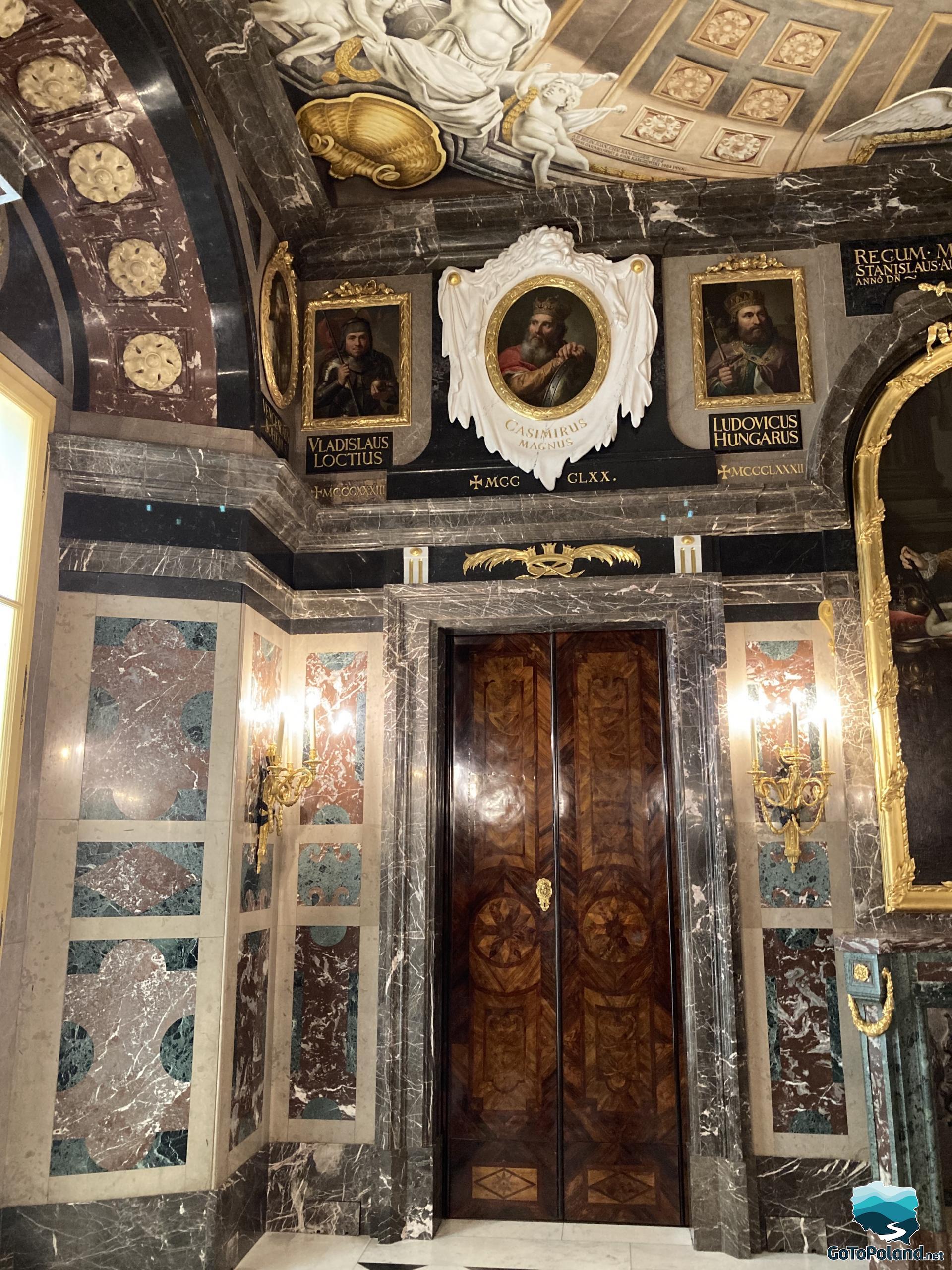
During the defense of Warsaw in September 1939, the Royal Castle burned down after German bombing. After the occupation of Warsaw by the German army, the planned looting of works of art from the building began. On October 10, 1939, specialized German teams, under the guidance of historians and experts, began to dismantle floors, marbles, sculptures and stone elements, such as fireplaces and cornices. Hundreds of Jews were forced to work every day, who, under the supervision of German architects, carried out demolition works inside. These collections were transported to Germany, warehouses in Kraków or placed in the Warsaw headquarters of Nazi dignitaries. The castle was completely stripped, a few elements of the equipment were allowed to be preserved by the Polish team from the National Museum, who described the losses and secretly prepared photographic documentation of the castle. The team worked under the direction of art historian Stanisław Lorentz. During the Warsaw Uprising in 1944, the castle was completely destroyed. After the destruction of 1944, only the ground floor (basements), the lower part of the Grodzka Tower, the building of the Royal Library and the Kubicki Arcades have survived. In 1965, these fragments of the castle were entered into the register of monuments.
The reconstruction of the castle carried out in the years 1971–1984 was led by the Civic Committee for the Reconstruction of the Royal Castle in Warsaw. The works were financed mainly from social contributions. In 1979, a museum was established in the castle. In 1980, the Royal Castle together with the Old Town was inscribed on the UNESCO World Heritage List. In 1994, together with the historical complex of the city with the Royal Route and Wilanów, was recognized as a monument of history. After long conservation works, on August 31, 1984, the reconstruction of the building was completed and the castle was handed over to the public. The preserved authentic interior elements were used as models to recreate the missing ones, and then they were also placed in the reconstructed rooms.
The clock on the Zygmunt Tower, which was rebuilt in a community effort, has a special history. The clock was built by a team of members of the Warsaw Guild of Goldsmiths, Watchmakers, Opticians, Engravers and Bronze Smiths. The mechanism consisted of 1700 details. On June 26 and 27, 1974, four clock faces were installed on the tower. On July 6, the clock bells and the clock mechanism were installed. It started its work as the first operating device in the Royal Castle on July 19, at 11:15 am (the clock stopped at this time on September 17, 1939).
In the years 2004–2008, a comprehensive renovation of the Tin-Roofed Palace was carried out (which was incorporated into the castle complex in 1989), and in the years 1996–2009, the Kubicki Arcades, which connect the middle and lower Castle Gardens, were renovated. It was here that US President Joe Biden spoke in 2023. Visit Warsaw with me.
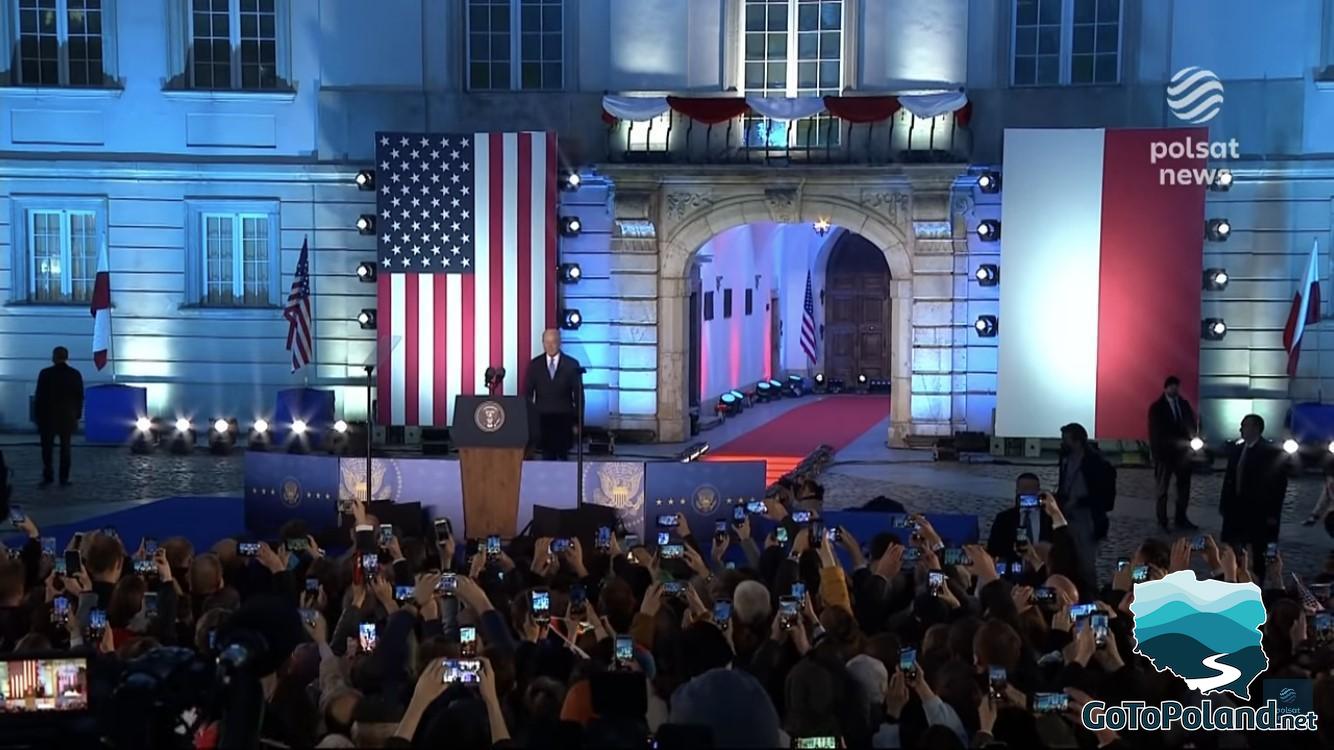
More information about The Royal Castle you can find on Wikipedia
You can also read my other threads about Warsaw: Warsaw in a few words and monuments, the Wilanów Palace and the Royal Łazienki. If you have some spare time, I recommend you to go to Palmiry.
Who famous visited the Royal Castle in Warsaw?
As I mentioned, the Royal Castle has hosted many distinguished guests, such as kings, queens, prime ministers, ministers, spiritual leaders and presidents. I will mention only a few people who graced the royal residence with their presence. For example, Elizabeth II, Queen of the United Kingdom of Great Britain and Northern Ireland, Margaret II, Queen of Denmark, John Carlos I, King of Spain and Queen Sofía, John Paul II, Pope, Cyril I, Orthodox Patriarch of Moscow and All Russia, Dalai Lama XIV, Spiritual Leader of Tibet, The President of the United States of America, Mr. George Bush Sr., The President of the United States of America, Mr. Barack Obama, President of the Russian Federation, Mr. Boris Yeltsin, The President of the People's Republic of China, Mr. Hu Jintao, The Chancellor of the Federal Republic of Germany, Mr. Helmut Kohl, Chancellor of the Federal Republic of Germany, Mrs. Angela Merkel, President of the Republic of Turkey, Mr. Recep Tayyip Erdoğan.
Which US presidents were in Warsaw after 1989?
The President of the United States of America, Mr. George H. W. Bush
The President of the United States of America, Mr. Bill Clinton
The President of the United States of America, Mr. George W. Bush
The President of the United States of America, Mr. Barack Obama
The President of the United States of America, Mr. Donald Trump
The President of the United States of America, Mr. Joe Biden
What to see in the Royal Castle in Warsaw?
You can visit many places related to the Royal Castle. You can admire for example The Royal Route (The Great Apartment, The Royal Apartment, The Four Seasons' Gallery, The New Deputies' Chamber, The Wettin Gallery, The Presidential Rooms, The Senator's Chamber, Jan Matejko's paintings, The Antechamber), The Gallery of Masterpieces, The Tin-Roofed Palace, Cellars, The Kubicki Arcades, The Royal Gardens. The best way to choose what we want to see is to check the official website and then make your decision.
Is it worth visiting the Royal Castle in Warsaw?
Yes definitely. In each room you can see the vastness of work that went into reconstructing the old interiors and items. I highly recommend visiting the Castle with its permanent and temporary exhibitions.
Are there audio guides in different languages at the Royal Castle in Warsaw?
Audioguides are available only for two sightseeing routes: The Royal Route and The Tin-Roofed Palace. Audioguides for The Royal Route are available in the following language versions: Polish, English, German, French, Italian, Spanish, Russian and Ukrainian. Audioguides for The Tin-Roofed Palace are available in Polish, English and French versions.
Is one day enough for the Royal Castle in Warsaw?
Yes, you can easily see all the places related to the Royal Castle in one day.
The Royal Castle in Warsaw opening hours
The Royal Route, The Gallery of Masterpieces and The Tin-Roofed Palace are open between 10.00-17.00 (last entry at 16.00). On Mondays the Castle is closed for public. The Royal Gardens you can visit every day from 10:00 to 18:00.
What day is free at the Royal Castle in Warsaw?
On Wednasdays admission is free to permanent exhibitions: The Great Apartment, The Royal Apartment, Jan Matejko's Paintings, The Senators' Chamber (insight from the outside) and The Gallery of Masterpieces – as part of one sightseeing route. Tickets are available at the Ticket Office, they need to be collected from there. The Presidential Rooms, The Wettins' Gallery are not available. Also guided tours and reservations are not available.
Is the Royal Castle in Warsaw open every day?
The Royal Castle is open every day, except Mondays. There are also a few days a year when the Royal Castle is closed (on the official website there is a list with particular dates).
Do children pay at the Royal Castle in Warsaw?
For children under 7, admission is free. Children aged 7 to 16 pay only PLN 1.
Is there a restaurant or cafe at the Royal Castle in Warsaw?
Yes, there is a restaurant. There are meat dishes, salads, soups, desserts, cold and hot side dishes and, of course, drinks.
I think that the most tourist choose to visit the Royal Apartments (these include the Royal Apartment and the Great Apartment). The Great Apartment consists of representative rooms: the Council Chamber, which was a meeting room of the Permanent Council, the first permanent government in Poland, composed of the king, 18 senators and 18 deputies; the Great Assembly Hall - a place of court ceremonies and gatherings, where feasts, balls, concerts and theater performances were also taken place; The Knights' Hall - dedicated to honoring people and the Throne Room - with reconstructed silver, embroidered eagles on the back of the throne. The whole is complemented by smaller, but unique rooms, such as the Marble Room - with the famous portraits of Polish kings, the Oval Gallery, the Conference Room and the Antechamber Room. The Royal Apartment are the rooms where the King lived. Except the Bedchamber, the King's Dressing Room and Cabinet, the Old Audience Chamber, the Officers' Room, there is also the famous Canaletto Room - with a collection of vedutas, the Chapel, the Green Room and the Yellow Room, where the famous “Thursday dinners” were taken place. The rooms are filled with recovered and restored memorabilia and an extraordinary collection of works of art, mainly paintings and sculptures. Of course, the Royal Castle has much more to offer, such as the Gallery of Masterpieces where there are, for example, works by Cranach, Adriaen van Ostade and undisputed pearls, i.e. works by Rembrandt van Rijn.
Now I will show you the most beautiful interiors at the Royal Castle in Warsaw :) but first …. This is how the Royal Castle looks like from the outside. Colorful tenement houses and the Sigismund's Column on the Castle Square add charm.
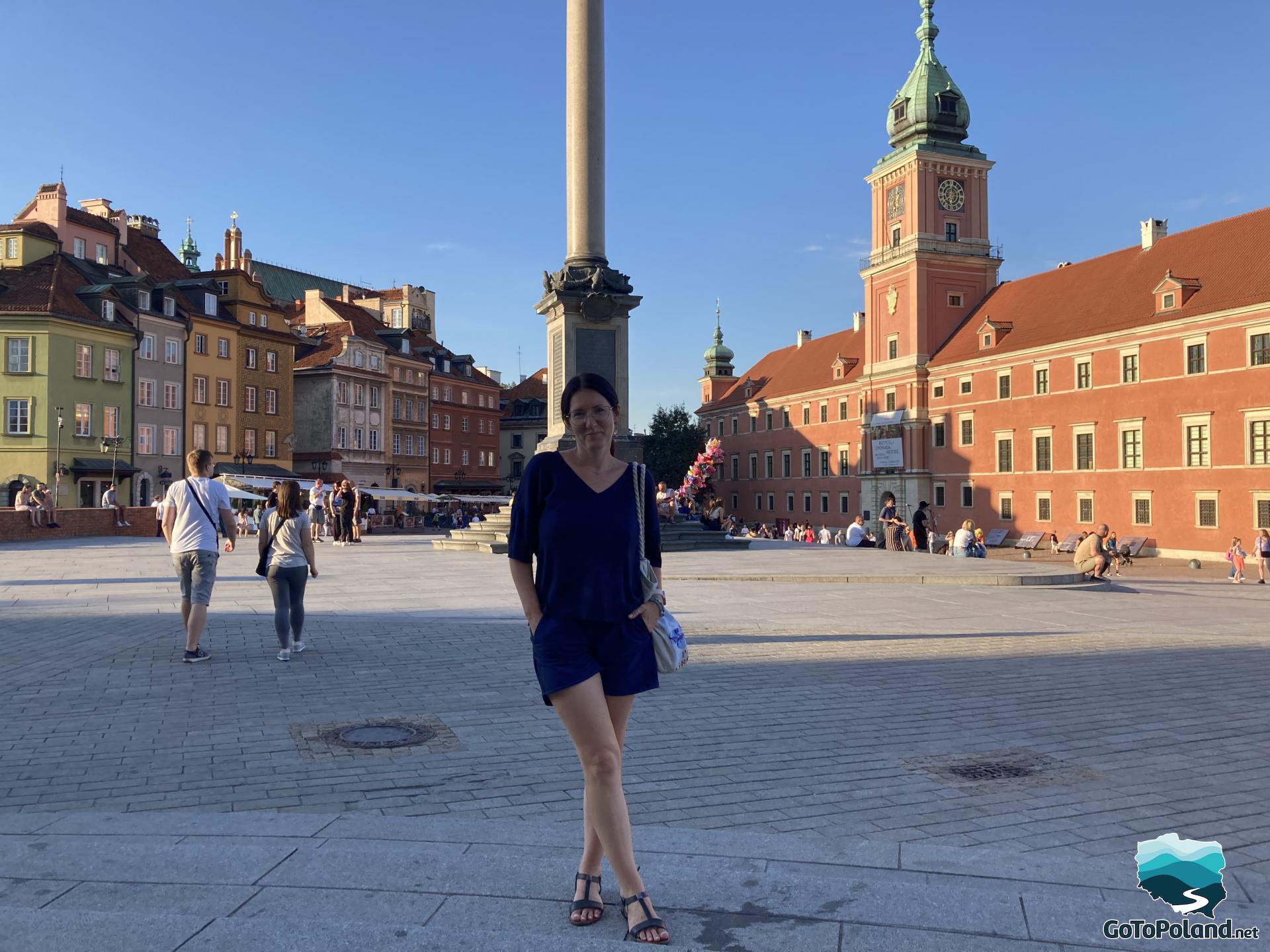
These are the first two stems from Sigismund's Column. One dates from 1644, the other from 1887.
 | 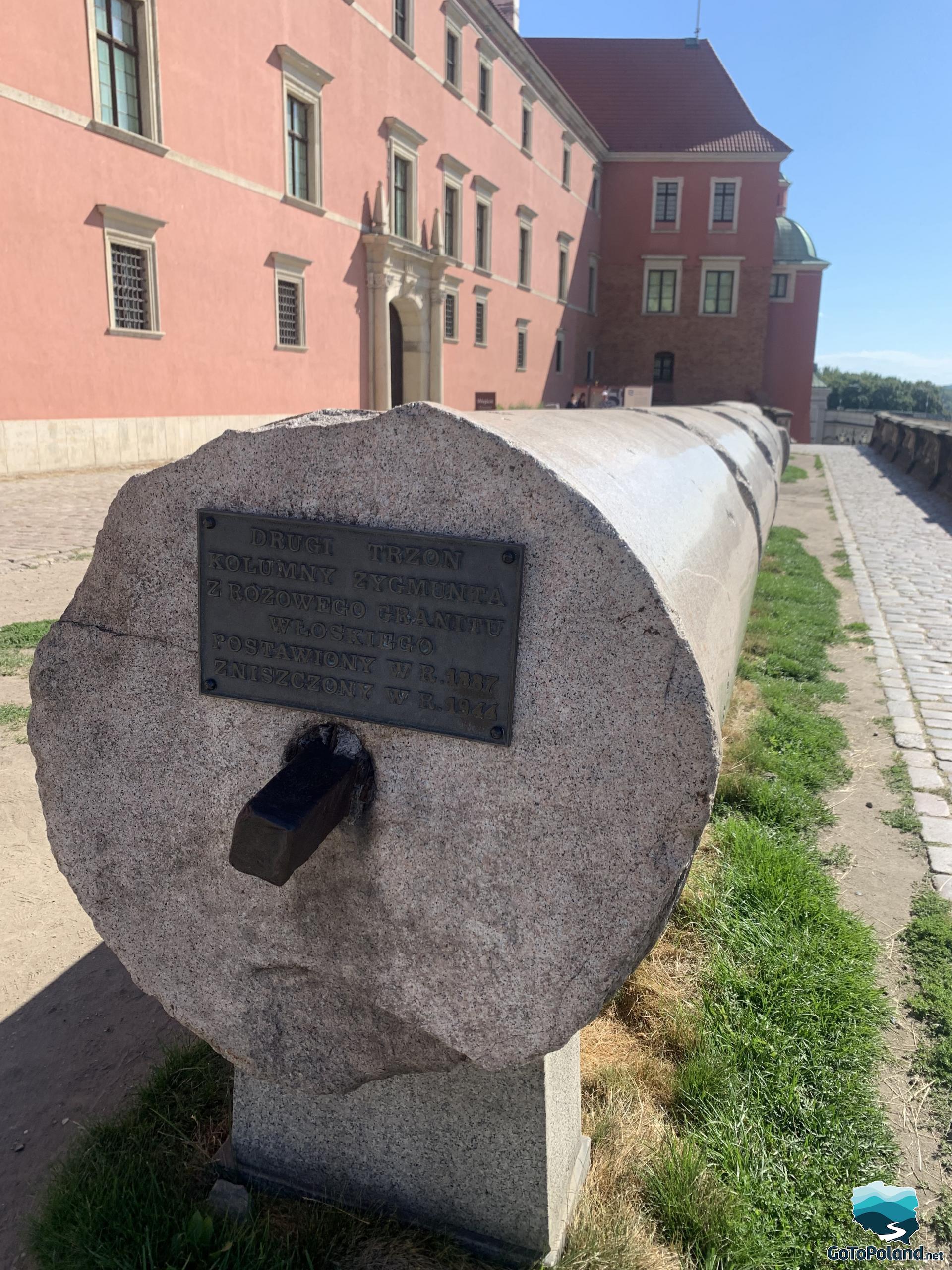 |
The Castle seen from the observation deck on the belfry of the church of St. Anna.
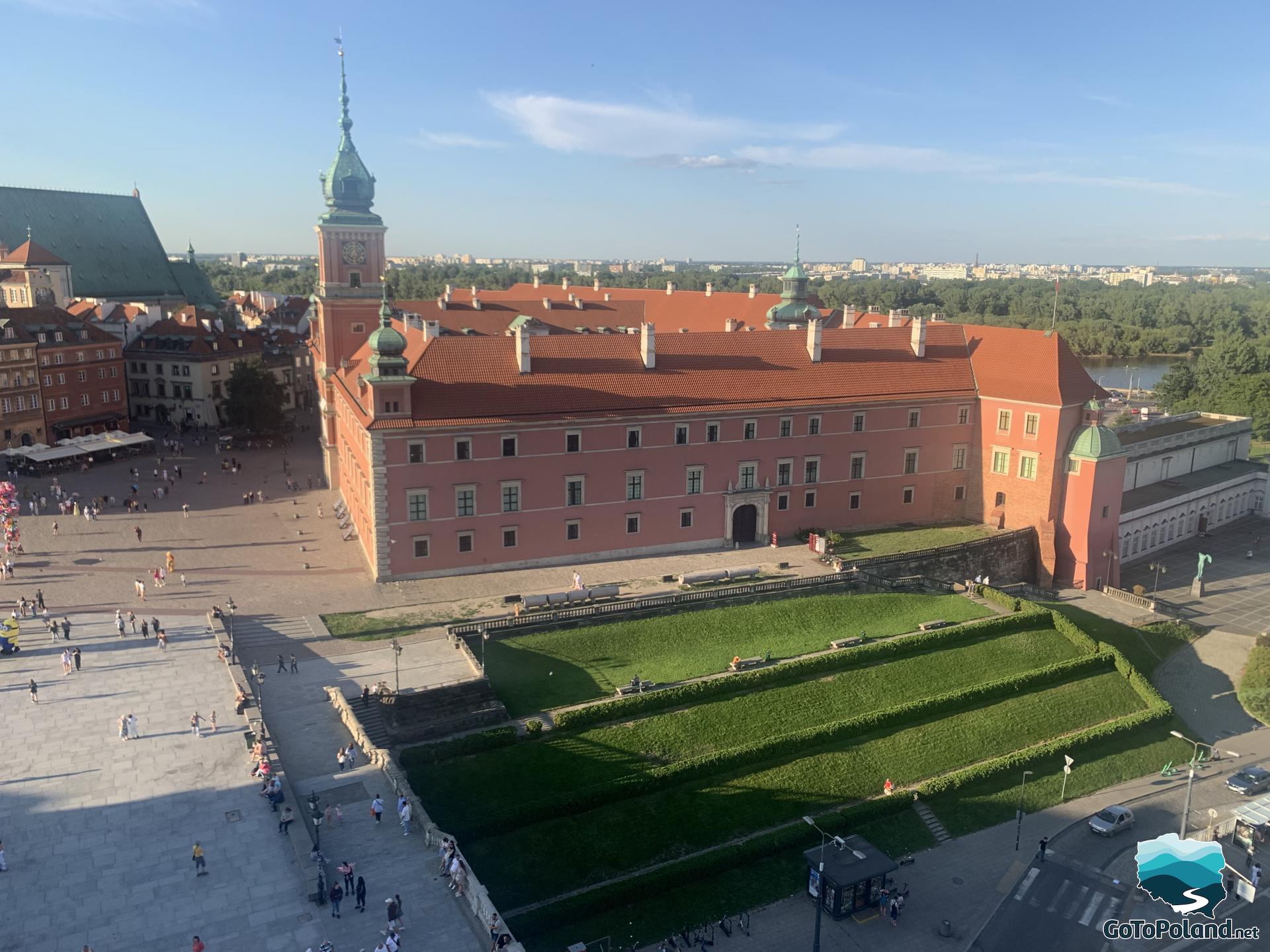

It's high time to introduce the Great Hall.
The Great Hall is the largest and most representative chamber of the Castle. It has an area of 321m2. The hall was reconstructed on the basis of photographs from before 1939, it has preserved stucco elements, saved statues of Apollo and Minerva by André Le Brun and a sculptural composition presenting allegories of Justice and Peace. The hall is decorated with round golden stucco columns, magnificent candelabras, chandeliers and richly gilded wall decorations. In the times of King Stanisław August, the Great Hall was the place of court ceremonies. Feasts, balls, concerts and theater performances were held here.
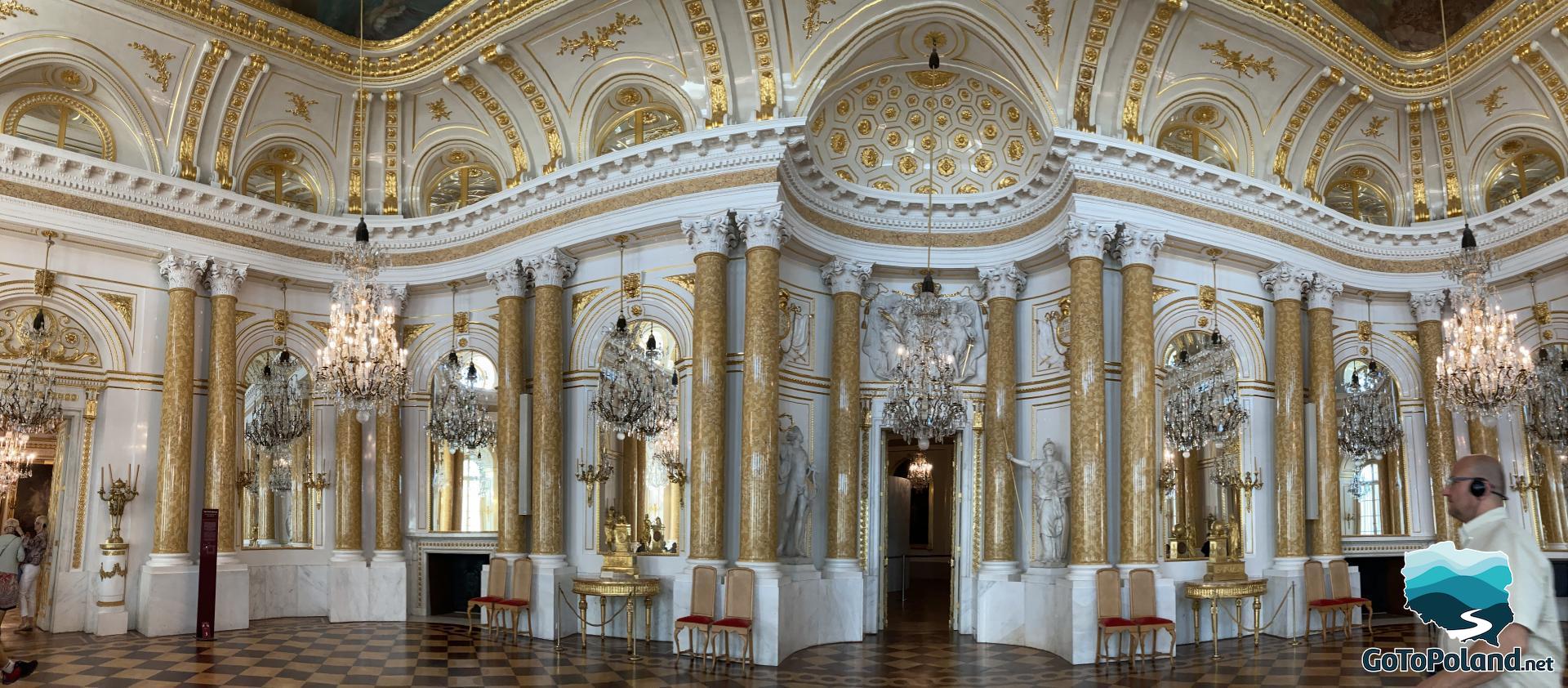
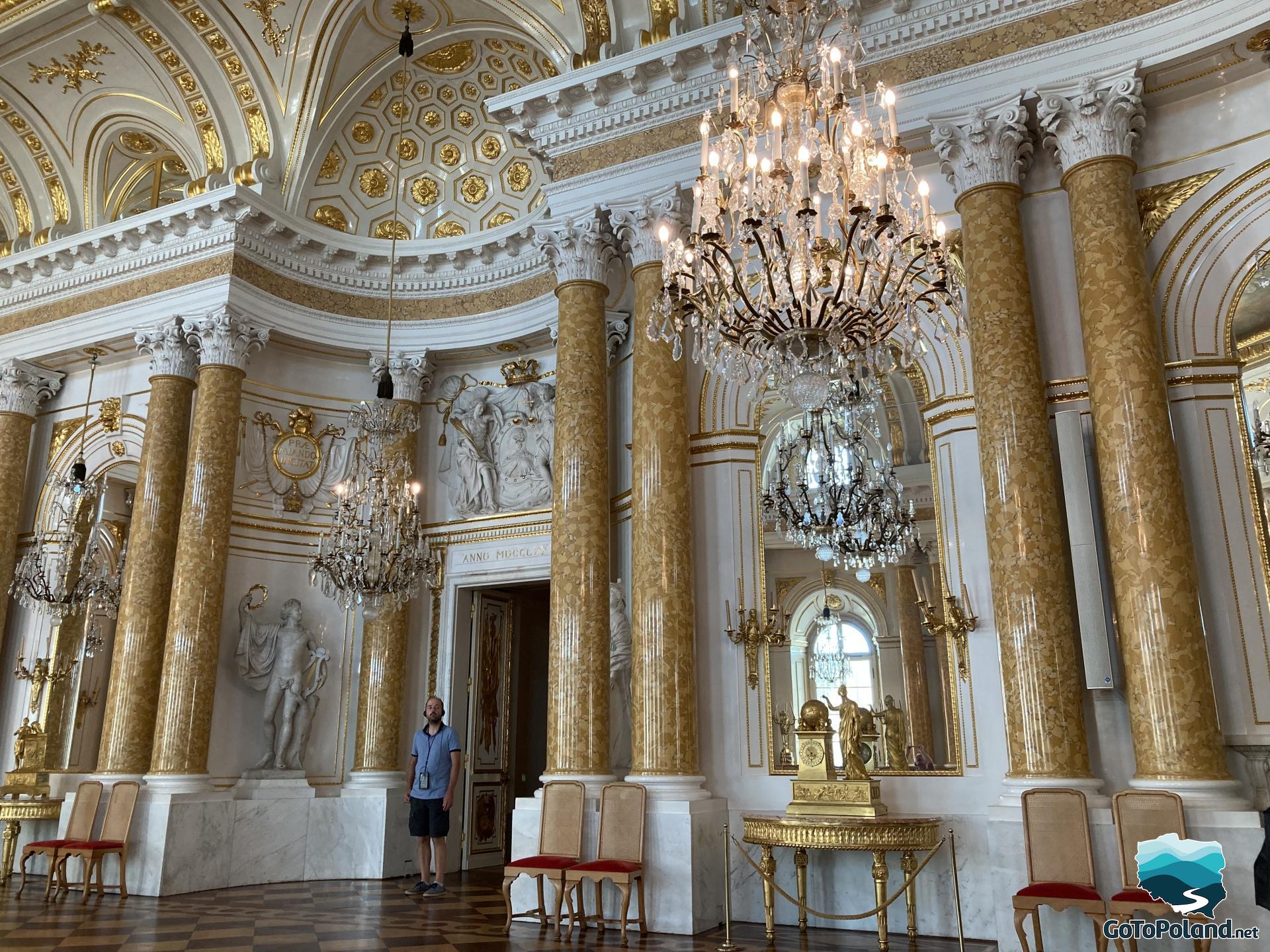
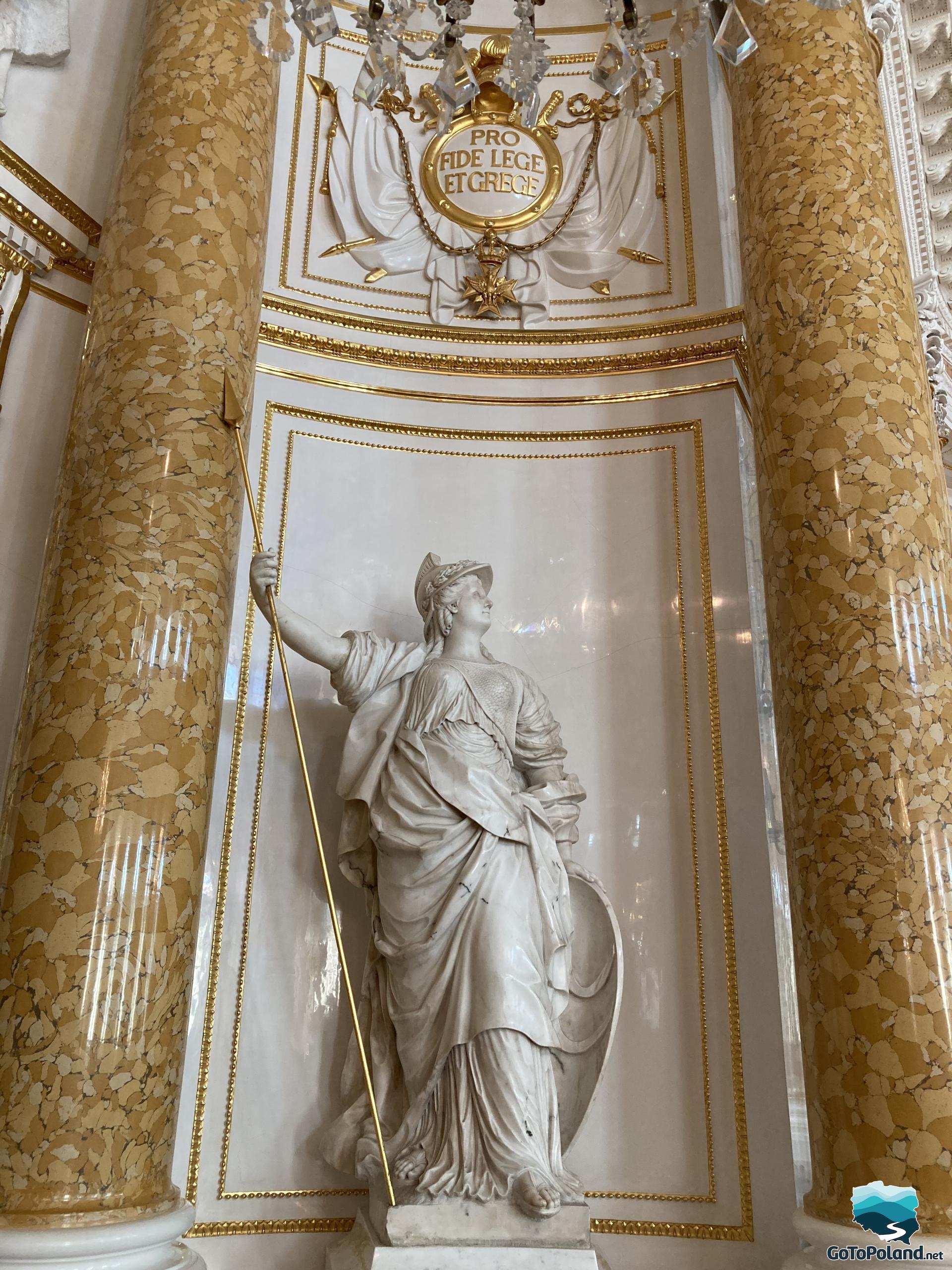
My boys are listening carefully :)
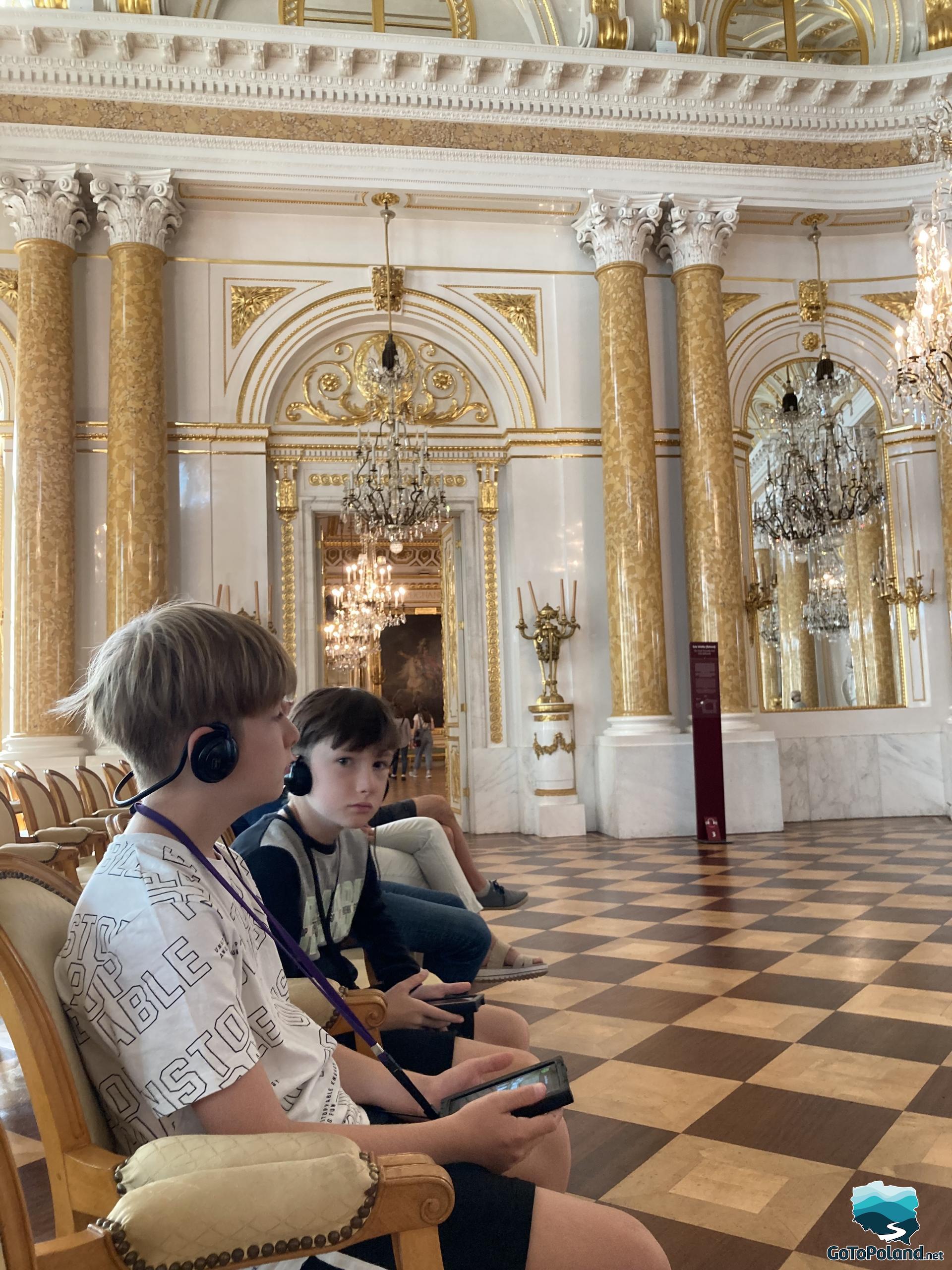
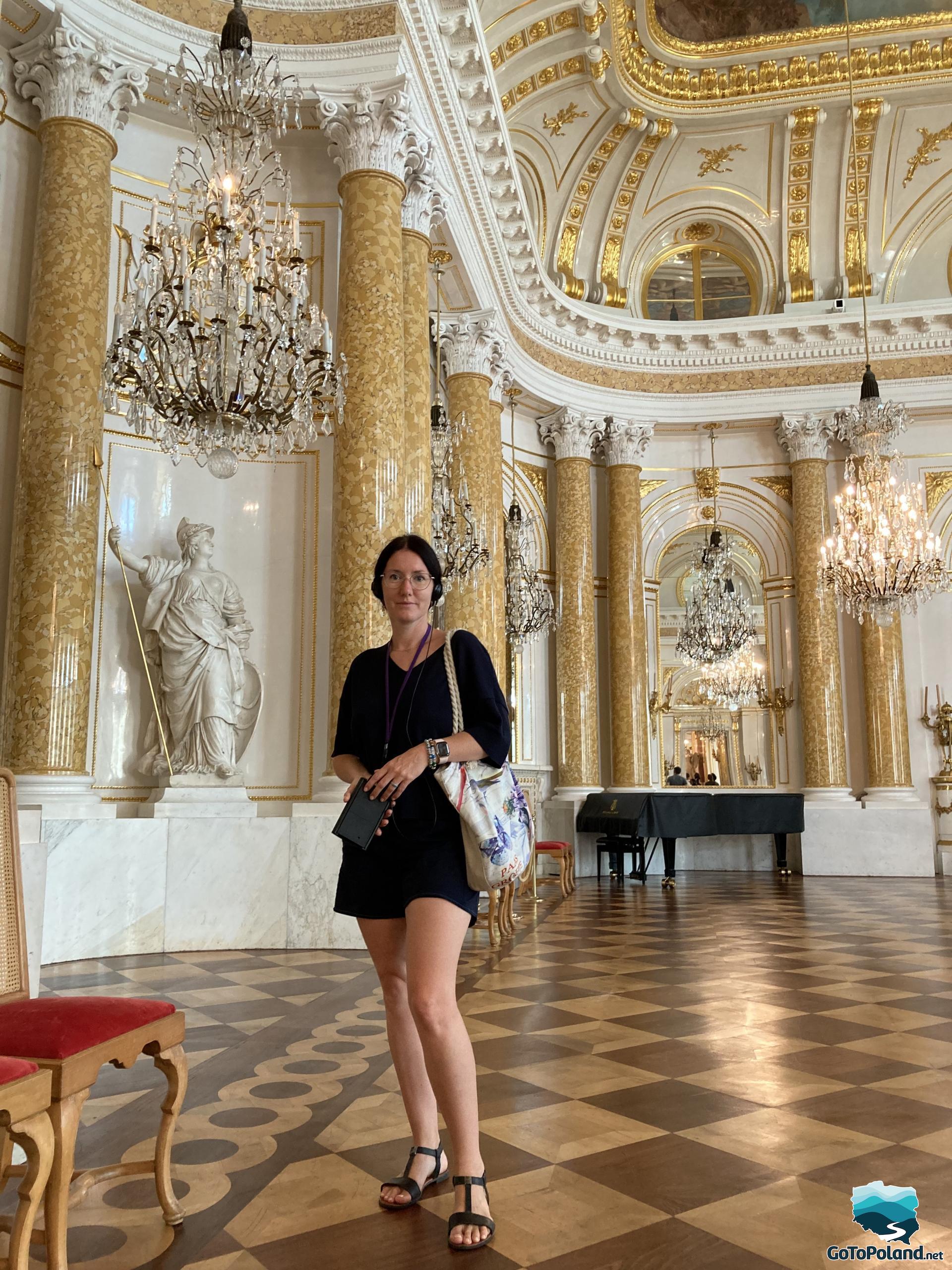
A meticulous portrait of the queen - the last ruler of the Jagiellonian dynasty. She was the daughter of Sigismund I the Old and Bona Sforza. From 1575 she was the queen of Poland. In 1576 she married Stefan Batory, who became iure uxoris the king of Poland and had actual power.
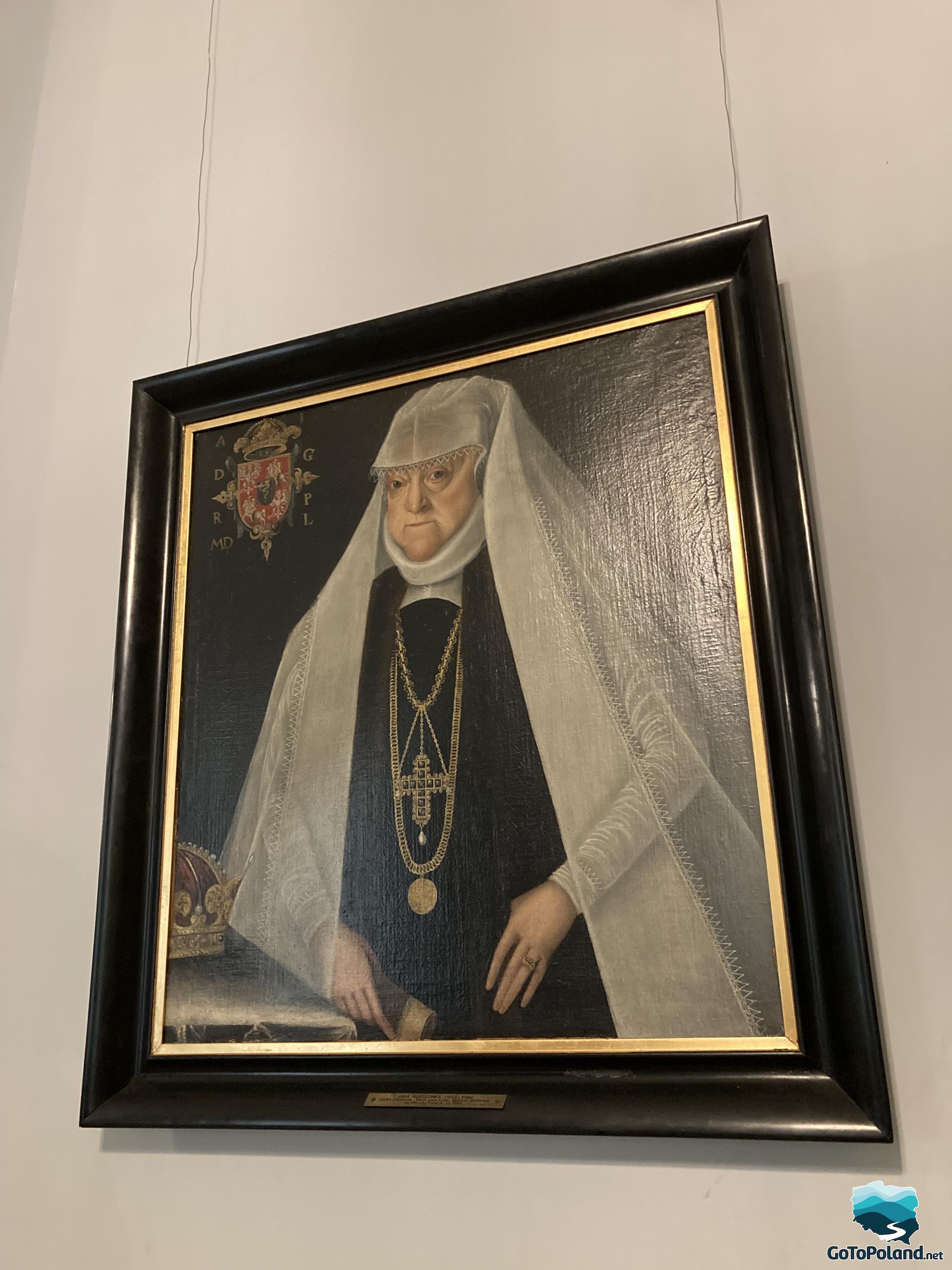
The Knights' Hall was dedicated to honoring people important for country. In the hall there are 10 oval portraits and 22 bronze busts depicting famous Poles selected by the king.
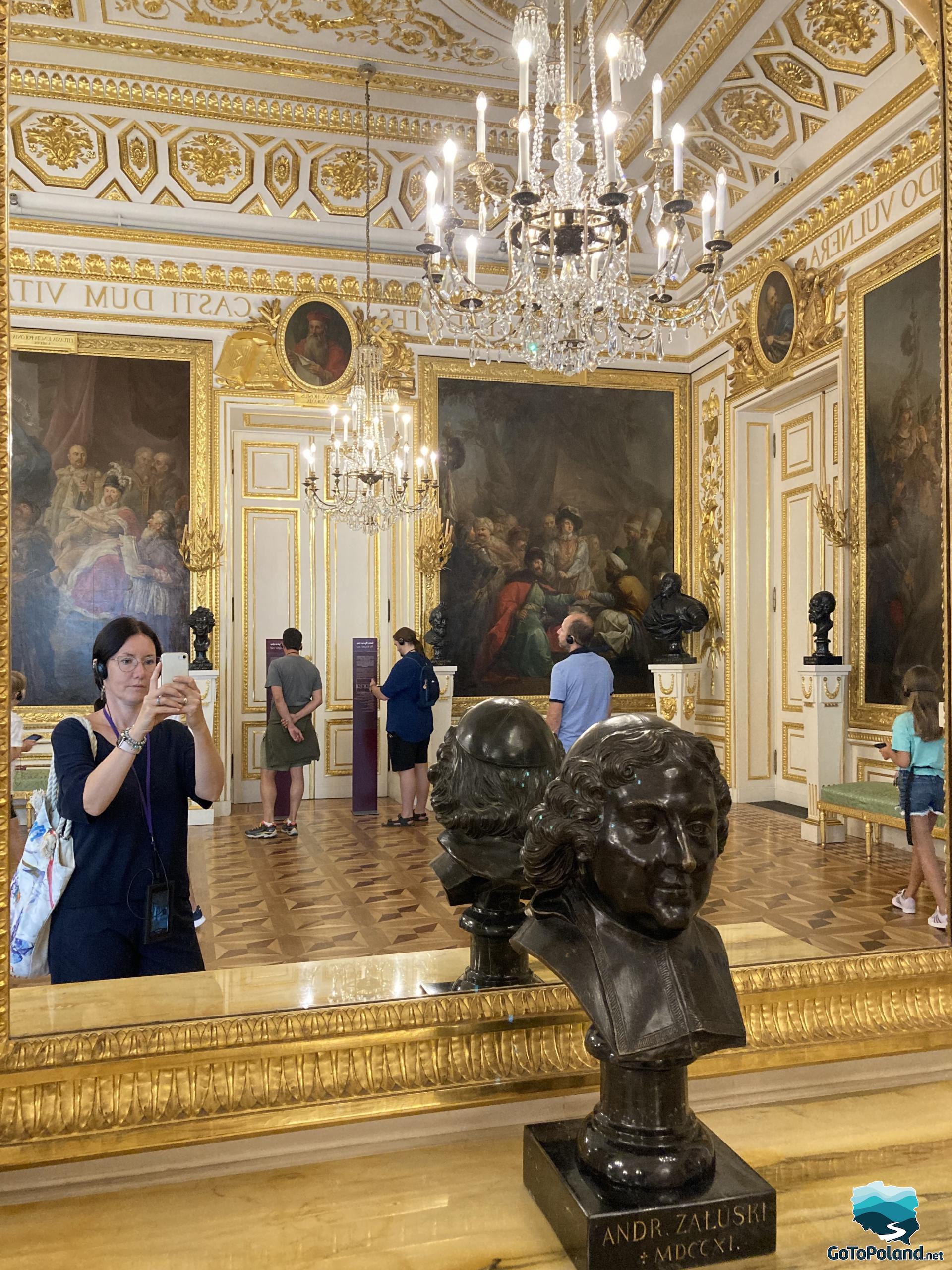
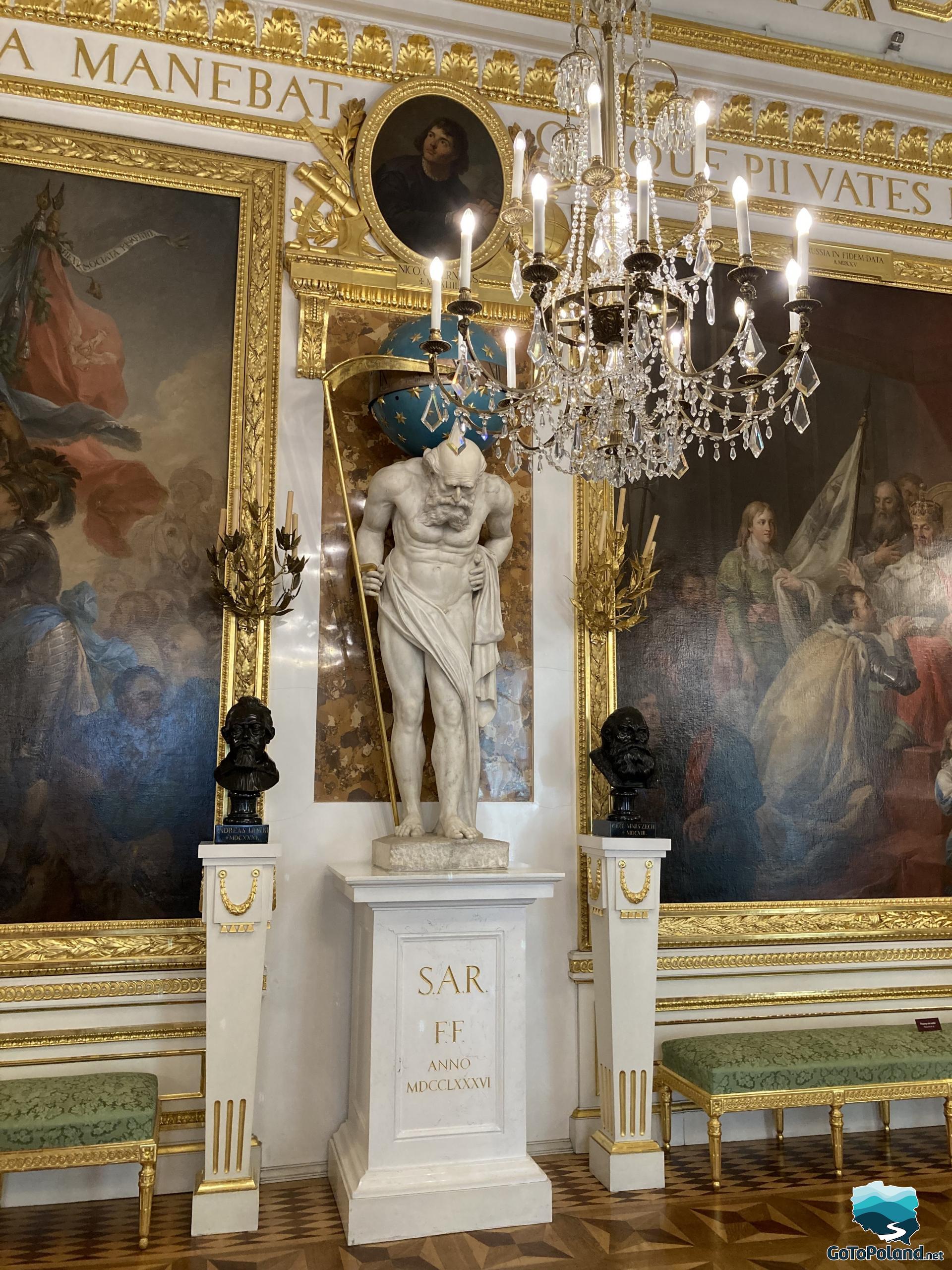
The Throne Room was designed by almost the entire team of royal artists. The most important roles were played by Dominik Merlini, Jan Chrystian Kamsetzer and Jan Bogumił Plersch. To create the interior, artists used paneling bought in Paris and two marble fireplaces from Rome. During the reconstruction of the interior, strictly according to the appearance from before 1939, hundreds of original fragments of paneling and stucco were installed. The most important, symbolic accent of the hall, there are the reconstructed silver, embroidered eagles on the back of the throne.
The history of eagles is highly unique!
The fate of royal eagles has been properly documented. Their file will be kept in the archives forever. Their content testifies to how tedious and long the search must have been to find any trace of the royal loss. The investigation began in the 1960s. Except to the rich correspondence in the folder, we will find also, one quite inconspicuous photo. A Pole from the United States sent this photo to the Royal Castle. What does the photograph show? An eagle. The man wrote that this eagle was bought by his grandfather during the war, in Switzerland, from some German. The bird returned to Poland in 1991. It arrived as it hung on the wall at the owners' house, in a frame.
Thanks to the found eagle, more than 80 other birds were reconstructed. The originals were made in Lyon, France in 1786. The most expensive, noblest materials were used for the decorative embroidery. What's more, the company still exists! Historical fabrics were ordered from it to recreate the decorations from the Throne Room.
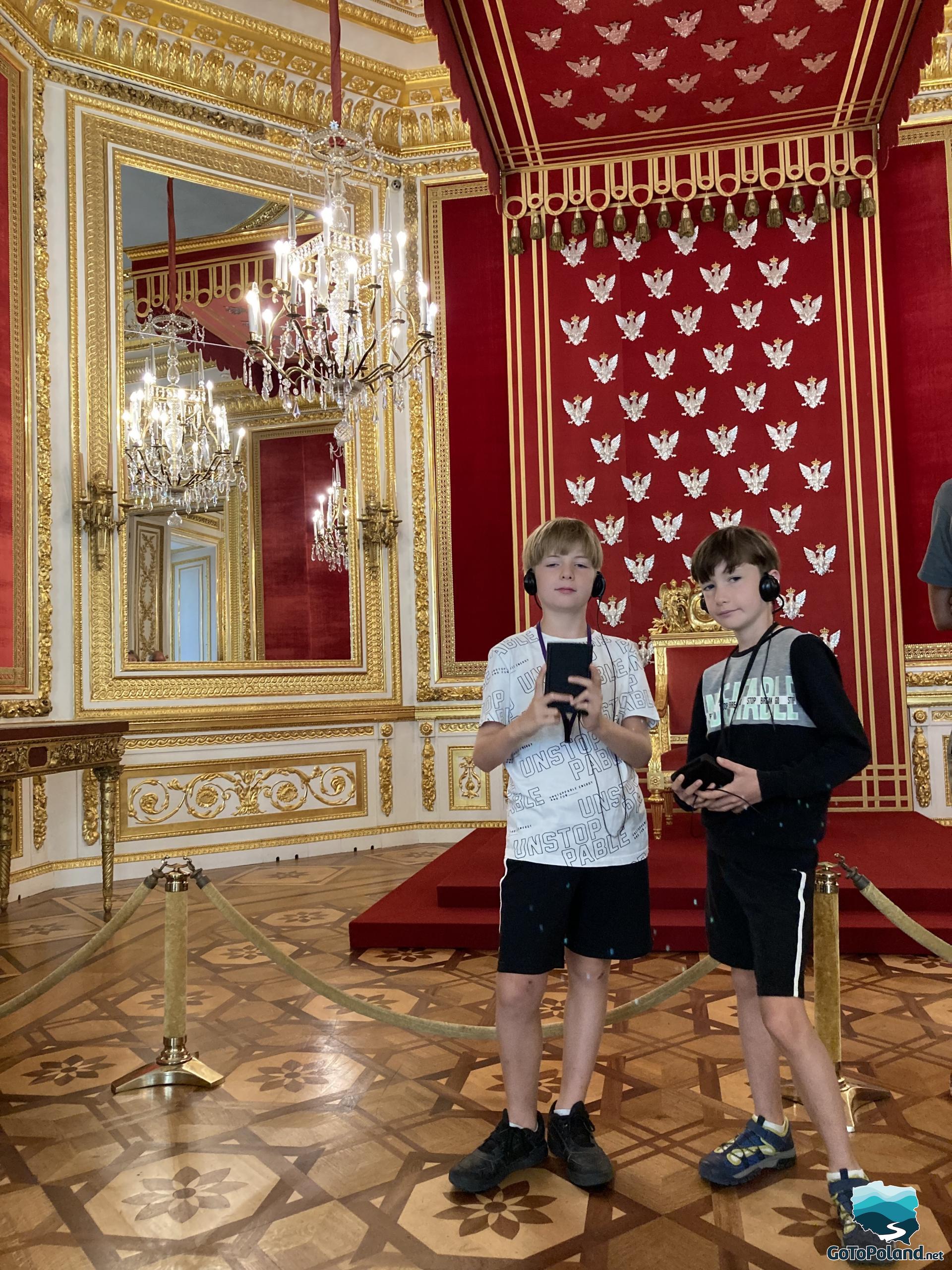
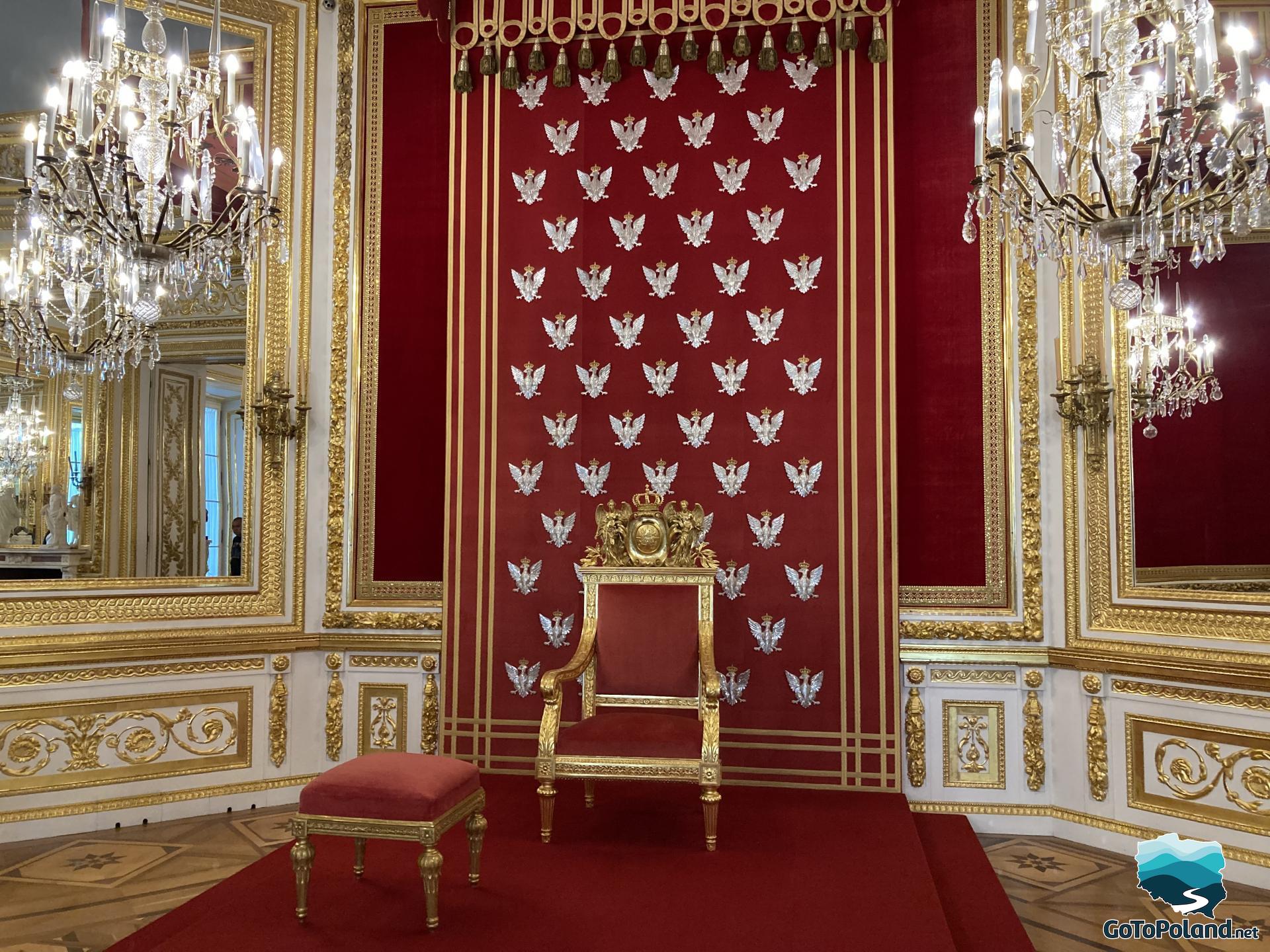
One of the most beautiful interiors is the Bedroom. It was designed by Jakub Fontana (just before his death) and completed in 1775 by Dominik Merlini. The character of the room is defined by the elegant paneling made of yew wood.
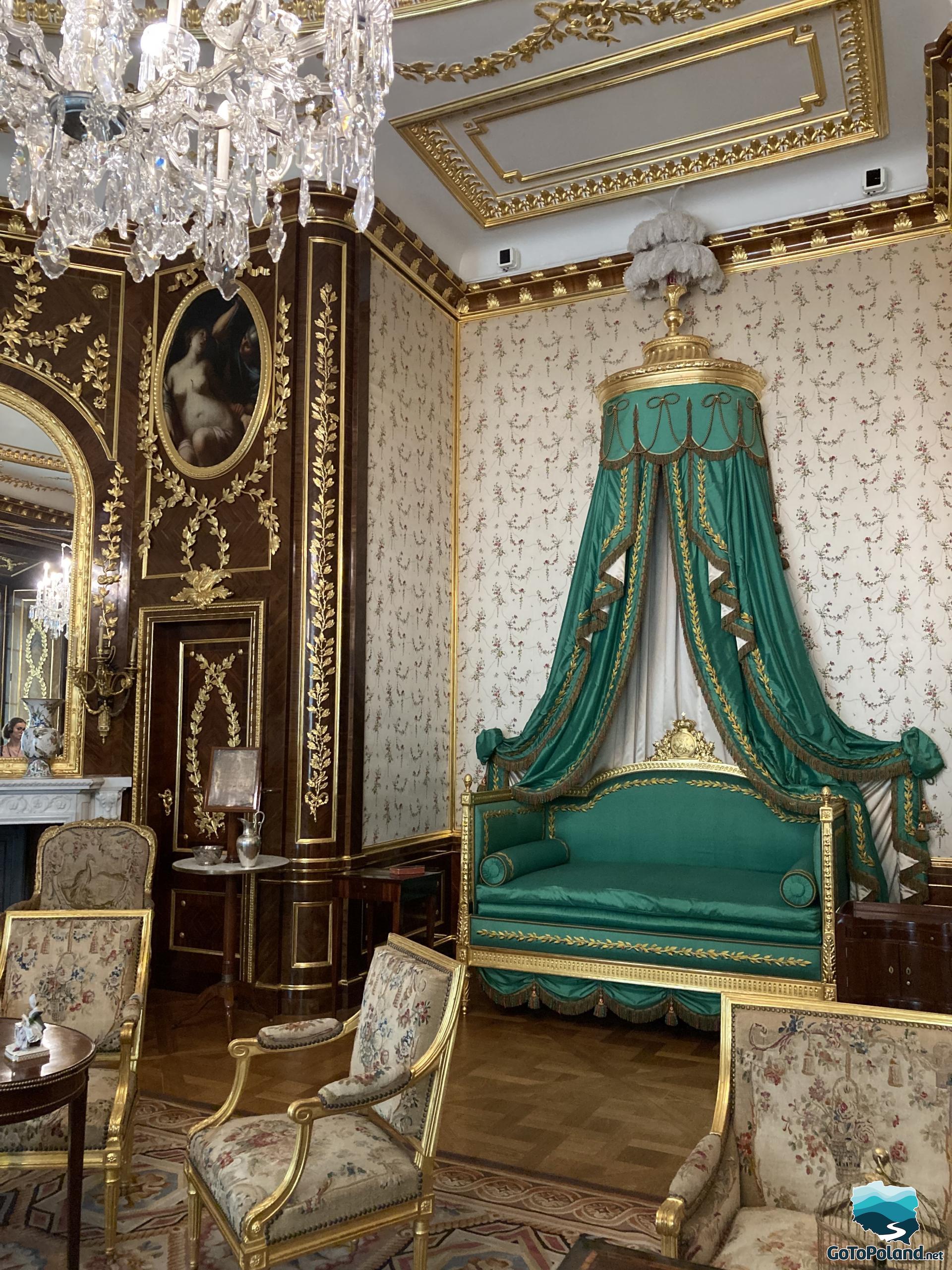
The Senator's Room is one of the most magnificent rooms in the Royal Castle. It was here that the Constitution of May 3, 1791 was passed. After the fall of the November Uprising, the decoration of the hall was destroyed. Currently, it has been rebuilt on the basis of drawings showing the appearance of this room before the period of destruction. The royal armchair and fragments of the decoration of the backrest and the canopy of the throne are original. The decoration of the throne was reconstructed according to the design of Andrzej Grzybowski, and the painting decoration of the hall was made by Andrzej Bertrandt. The arrangement of armchairs and chairs for senators and ministers was reproduced strictly according to the binding ceremonial of the Polish Sejm.
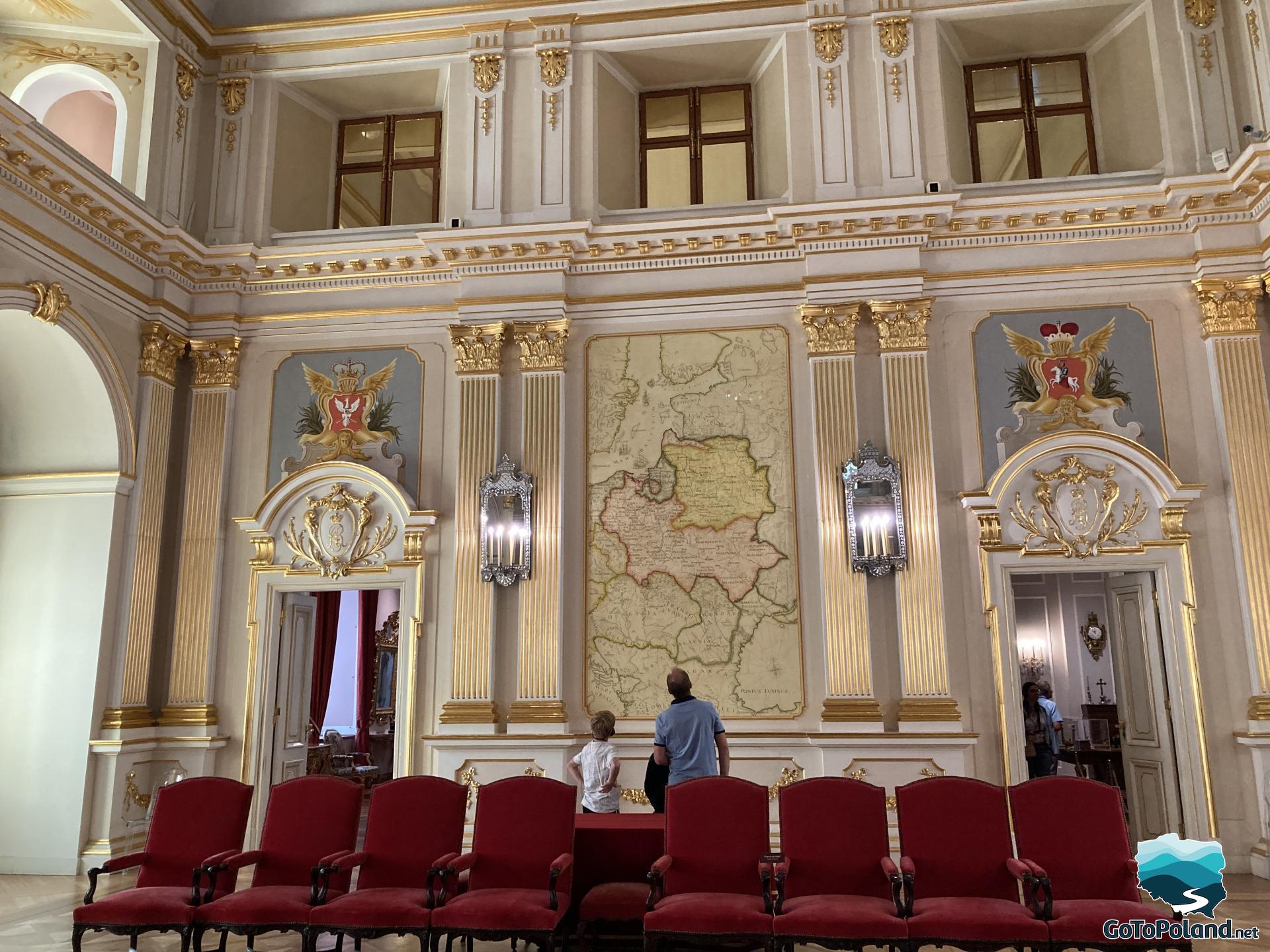
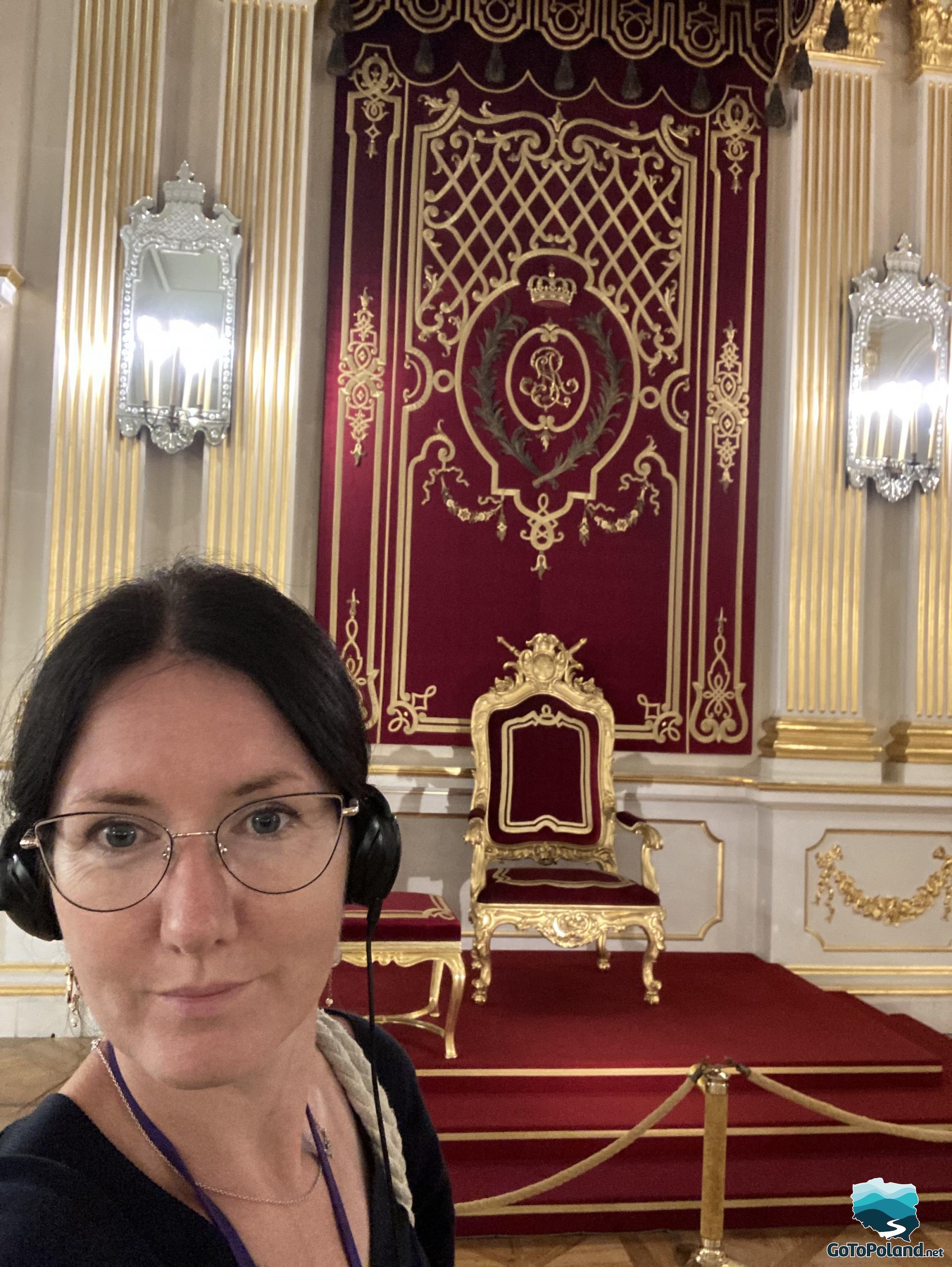
The paintings of Jan Matejko are probably known to most Poles. He is one of the greatest Polish painters in history. Jan Matejko created historical and battle paintings. He was the author of over three hundred oil paintings and several hundred drawings and sketches.
It was a great pleasure to see them with my own eyes….. to see the details, brush strokes, paint blurs, gestures and facial expressions. An incredible feast for the senses. Although I am not a fan of battle or historical painting, his works are a great work of art, you can see the craftsmanship of the master in them
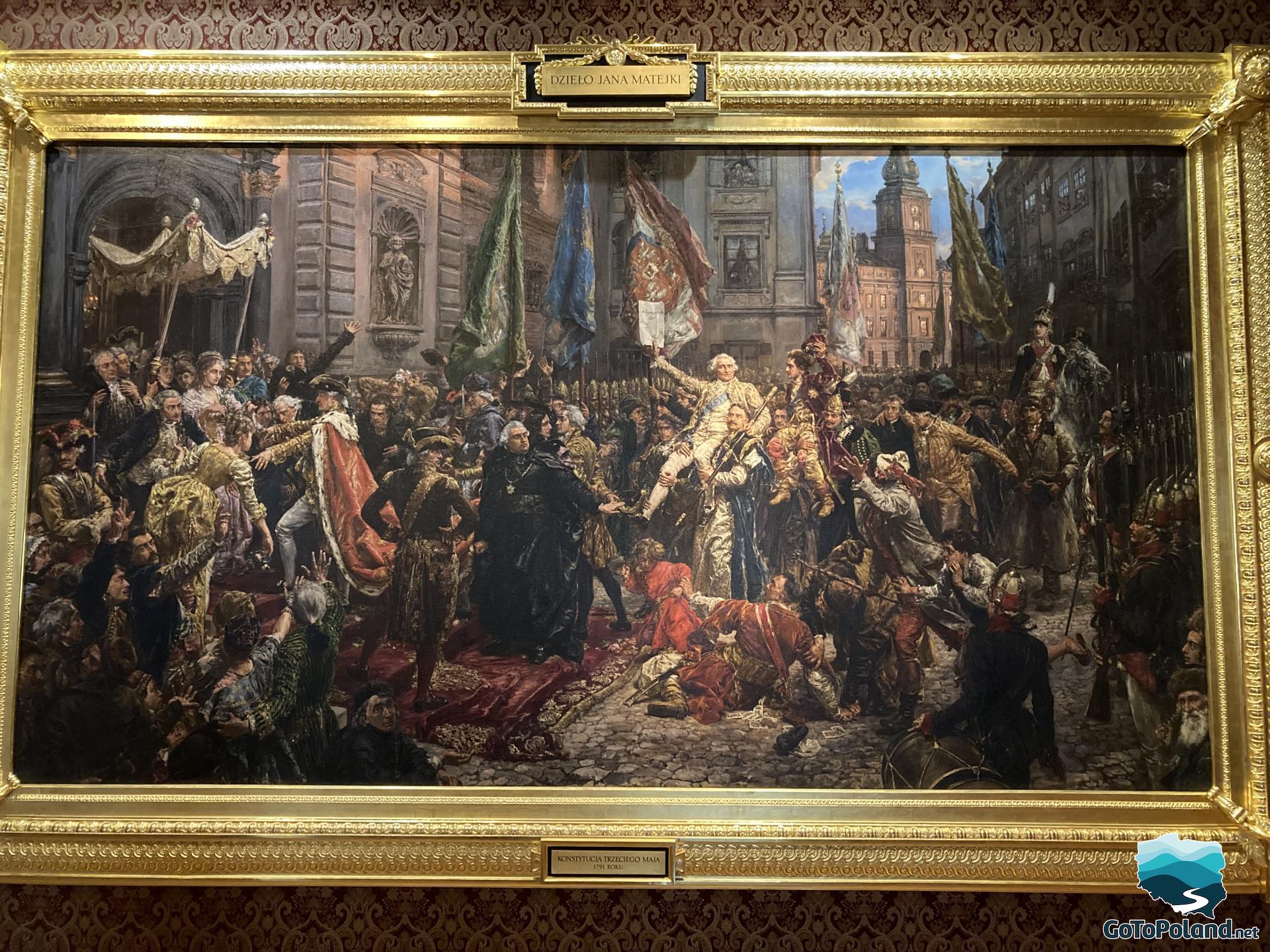
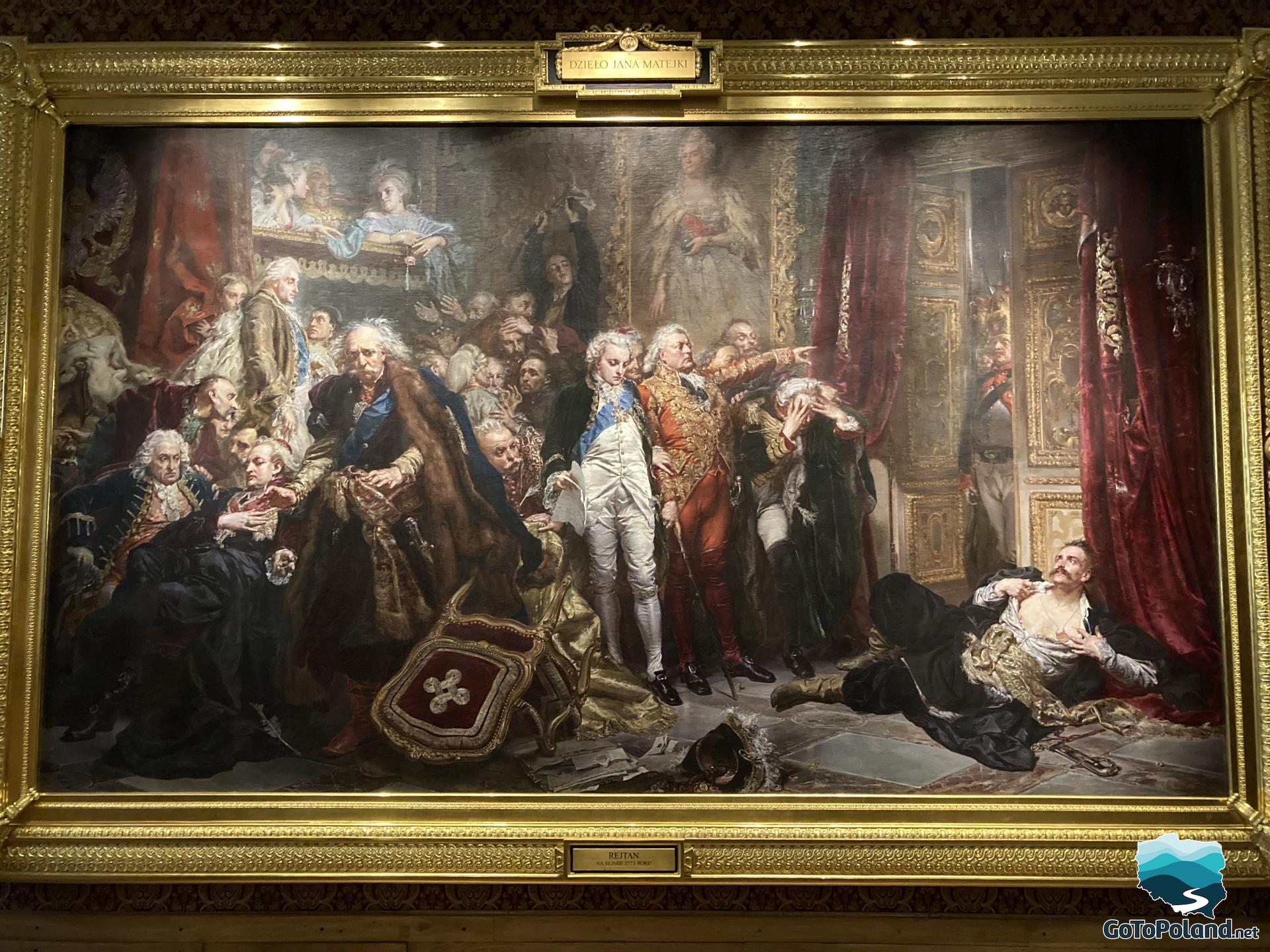
Marble Room served as the second antechamber in the state apartment. It is the oldest interior in this apartment. It was built during the reign of Władysław IV in the years 1640-1642 according to the design of Giovanni Battista Gisleni. The Marble Room was renovated by Jakub Fontana in the years 1769-1771, who preserved the basic elements of the architectural composition from the old interior and added 22 portraits of Polish kings, a plafond painted by Marcello Bacciarelli and statues of Justice and Peace above the mirror, made by André Le Brun.
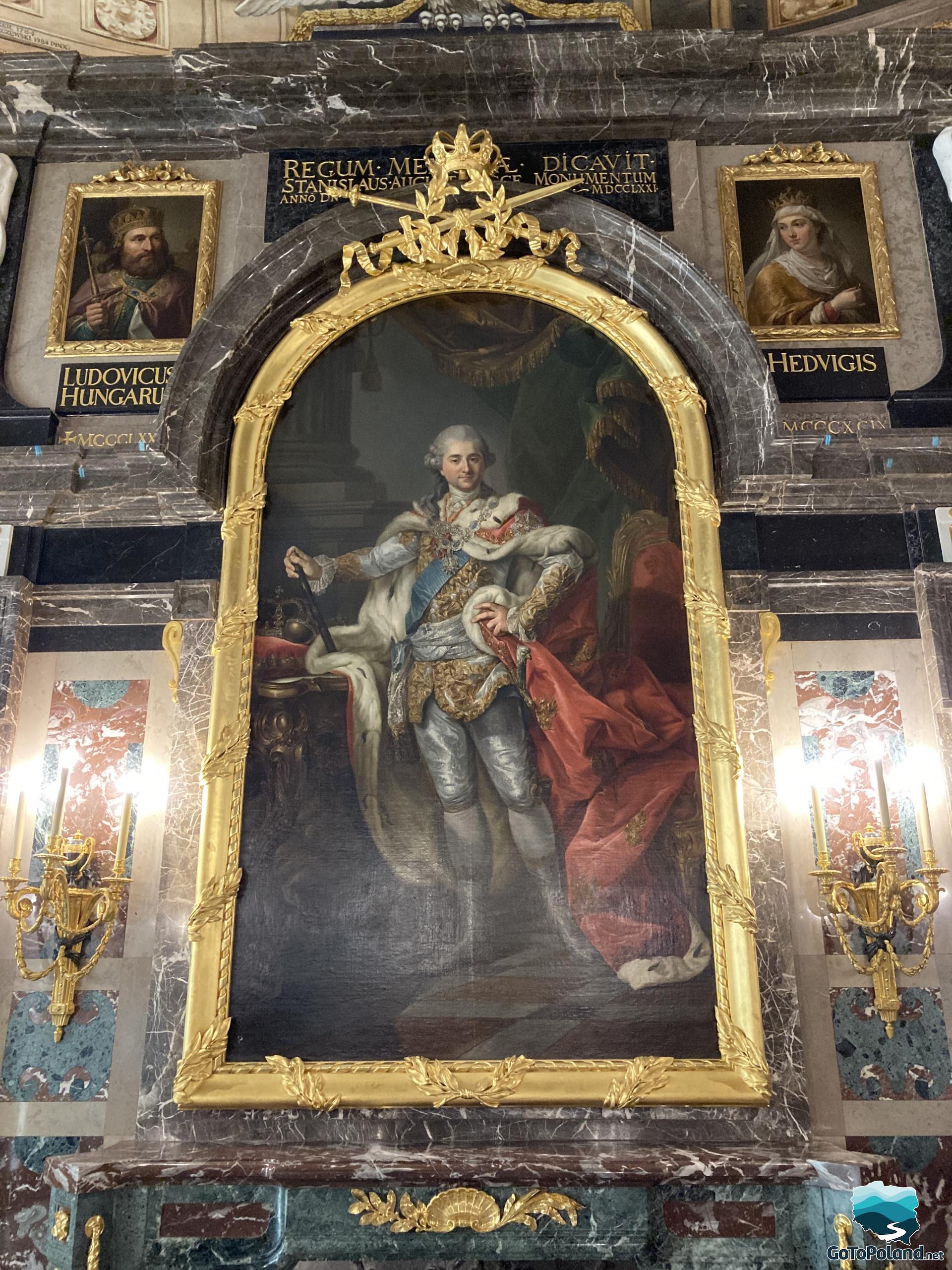
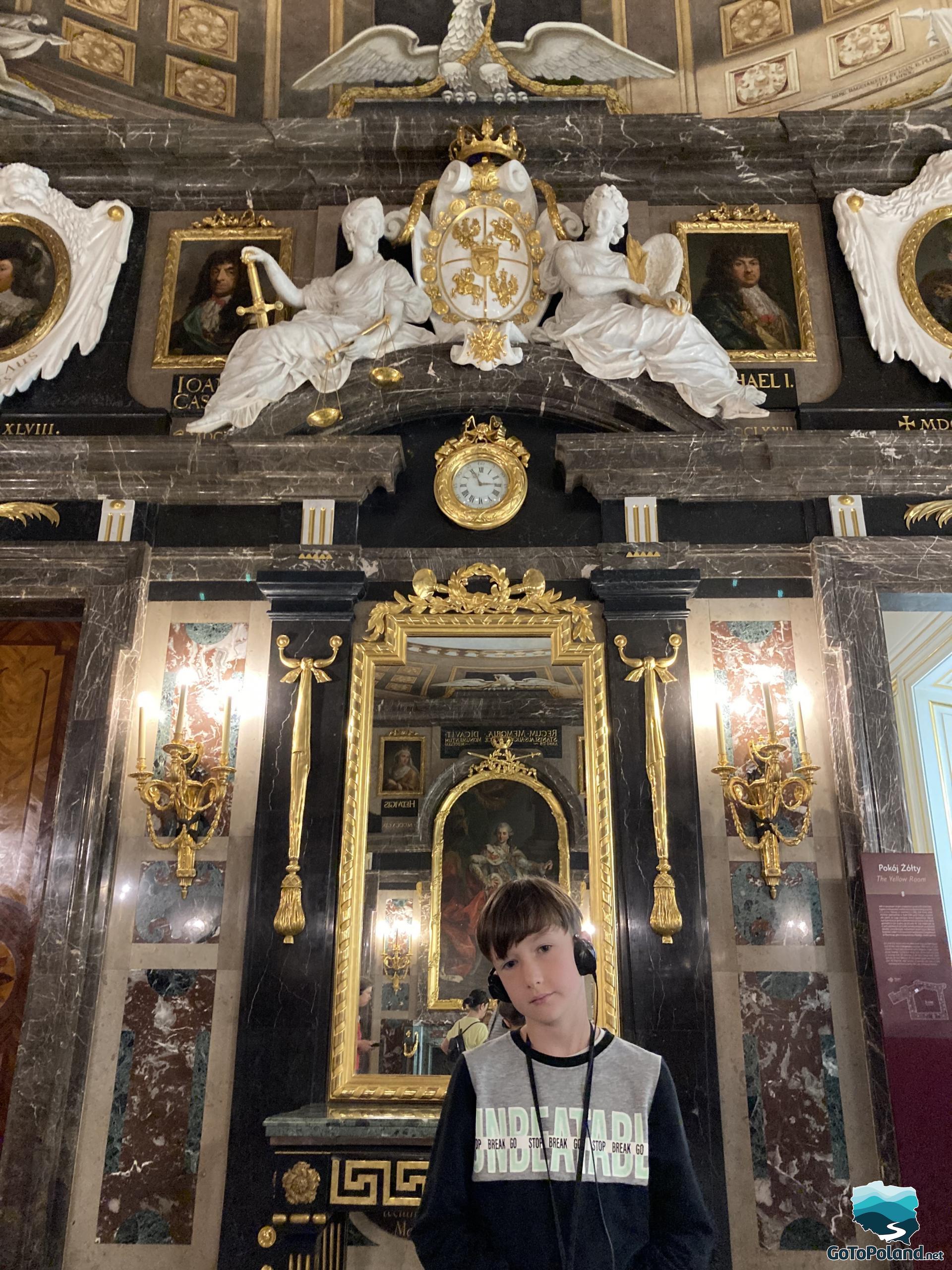
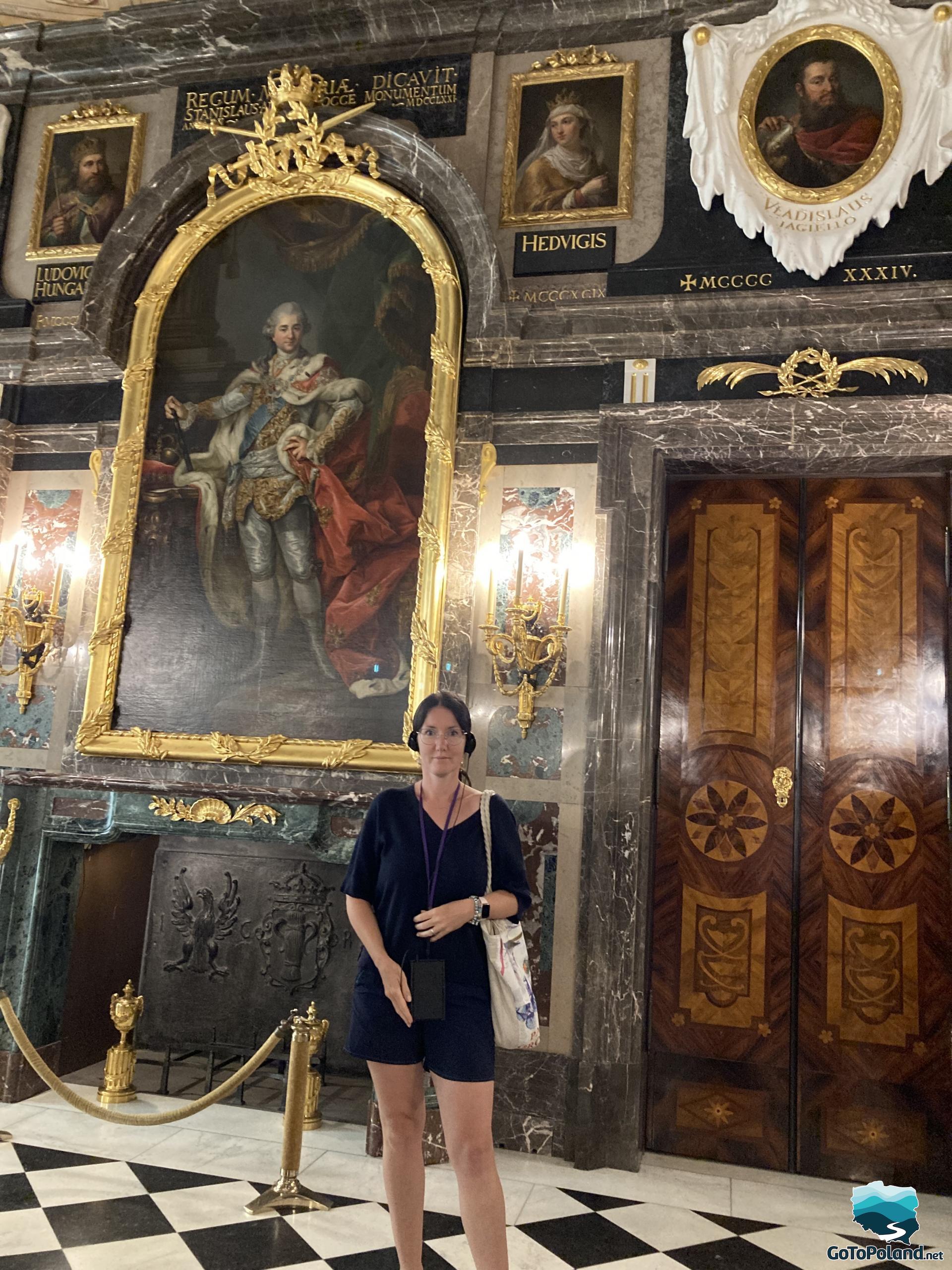
It's time to explore the area outside. We are walking along the Royal Gardens.
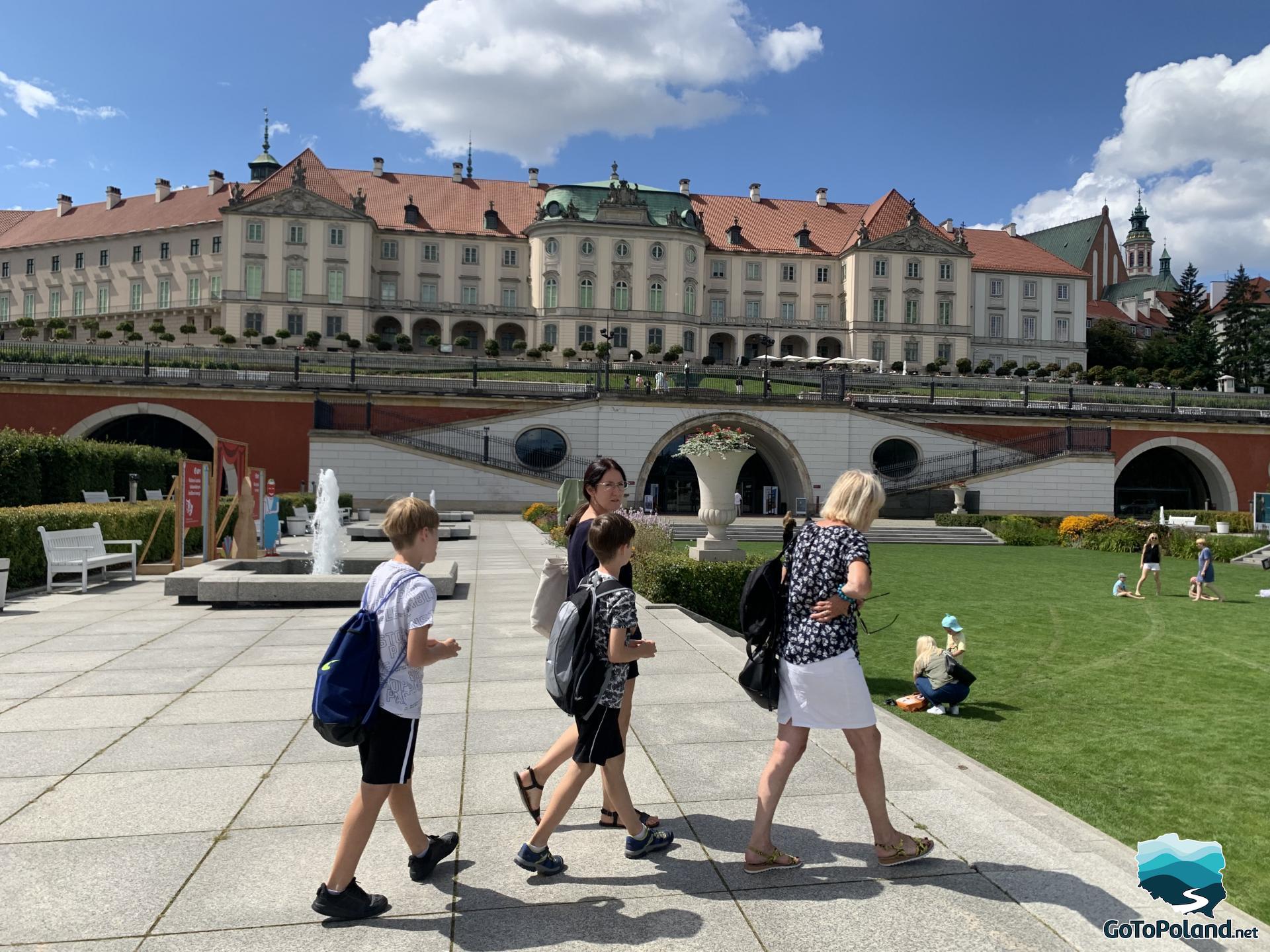
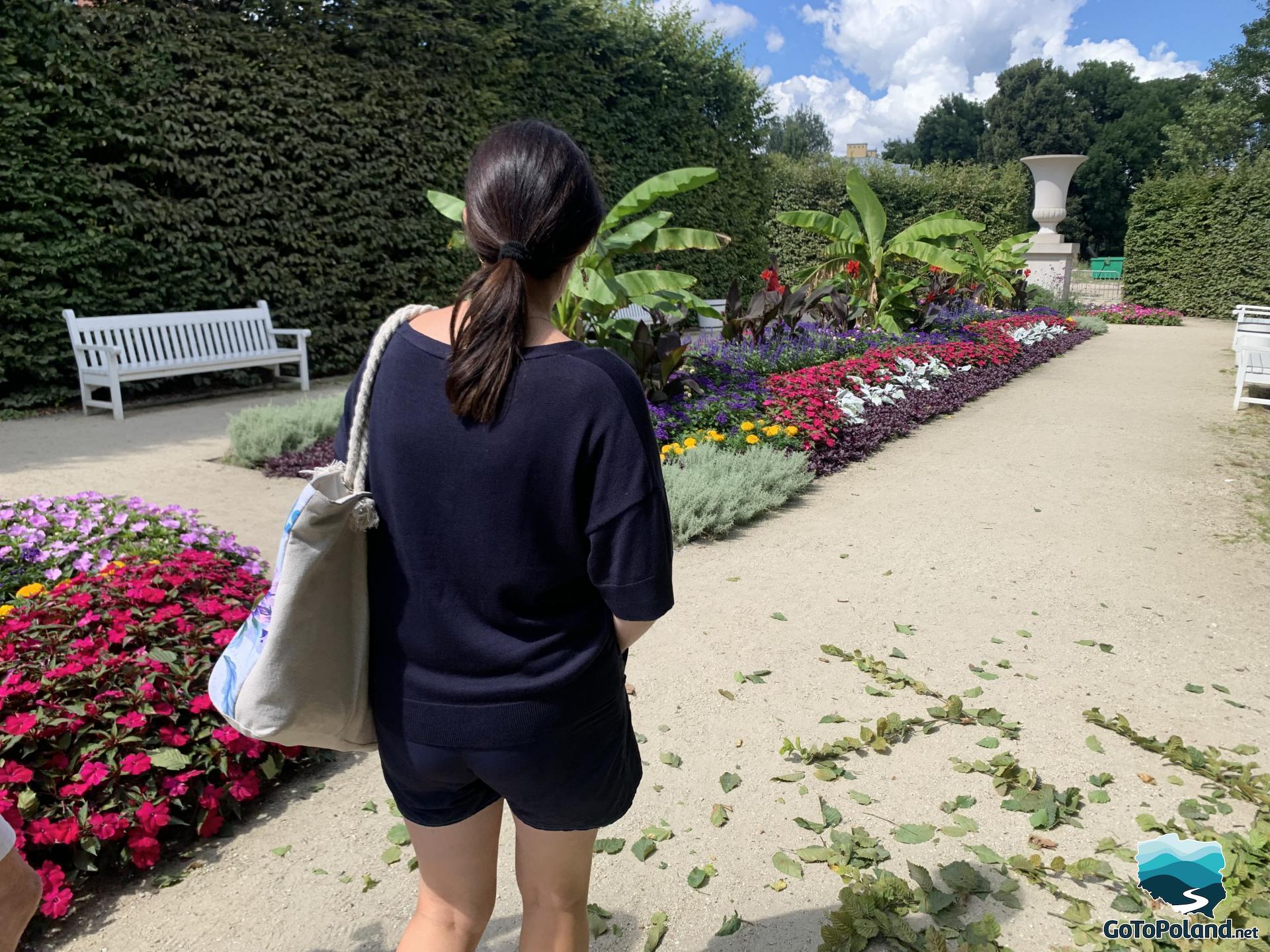
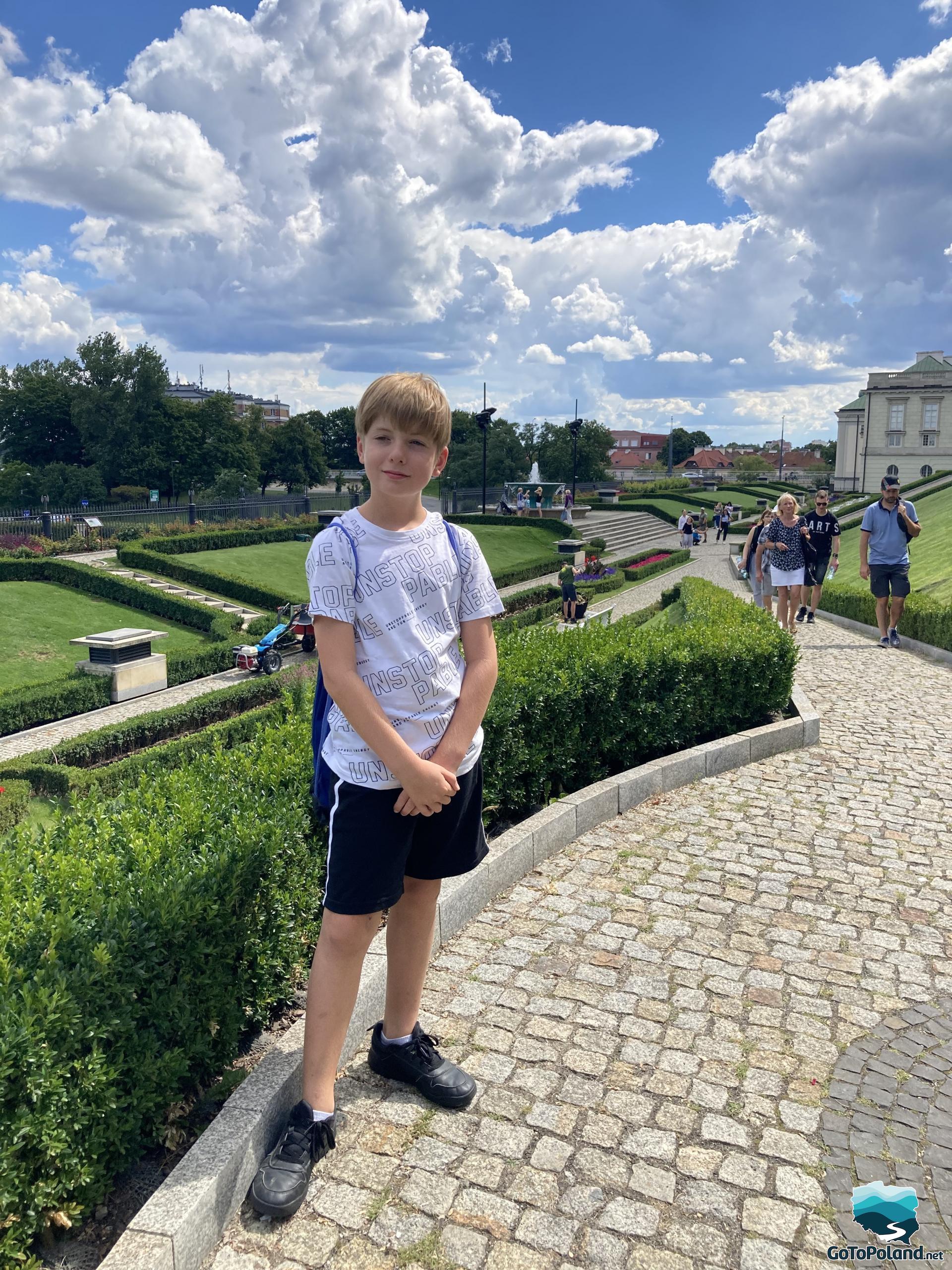
We finished our tour at night. It's just like us, we don't waste a moment. For us, discovering new places is pure pleasure.
